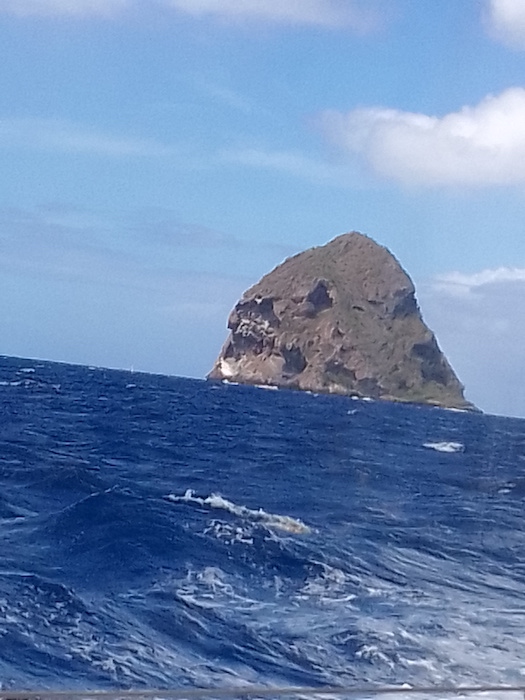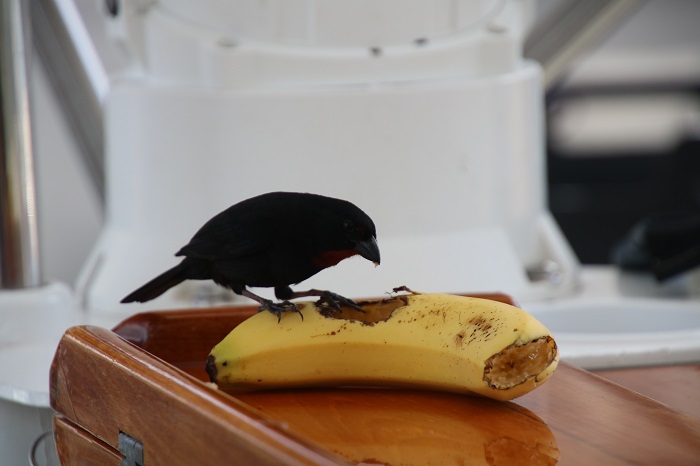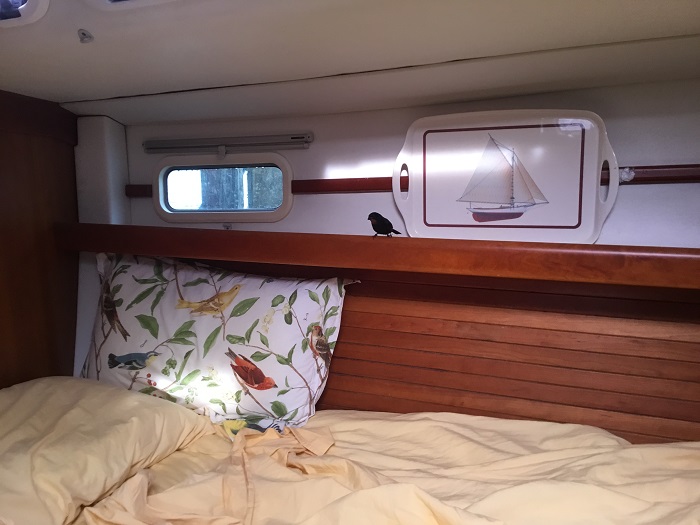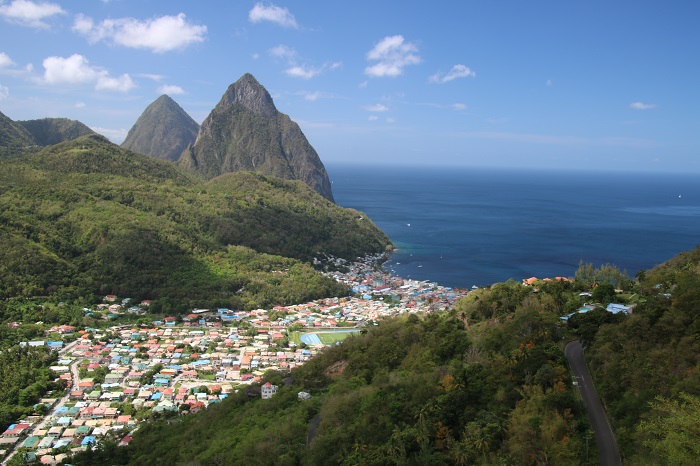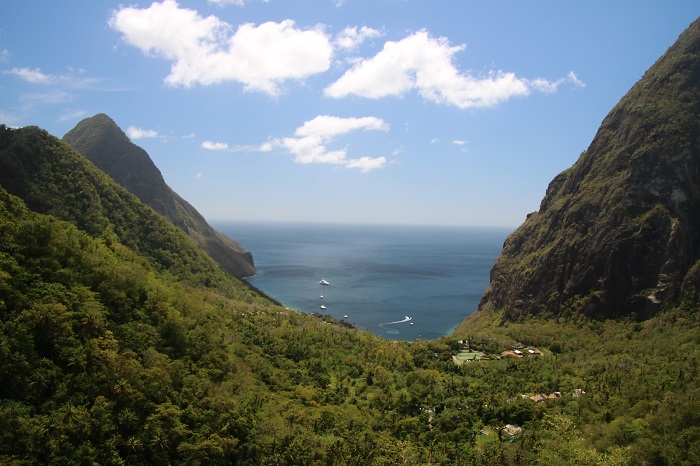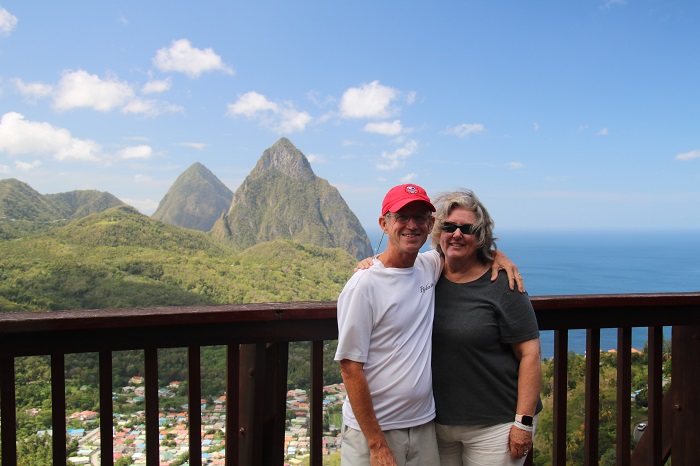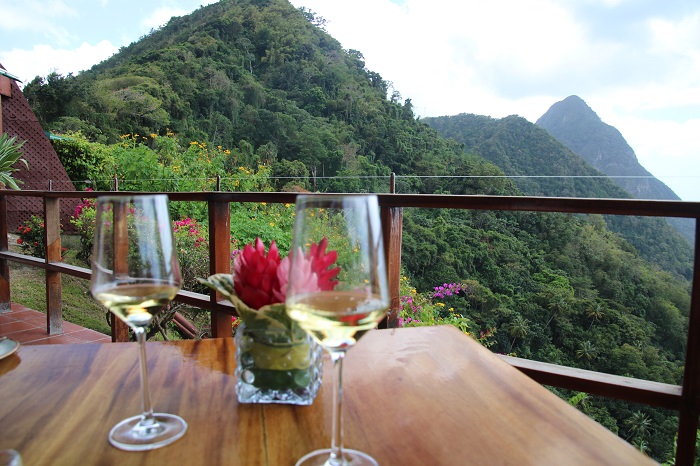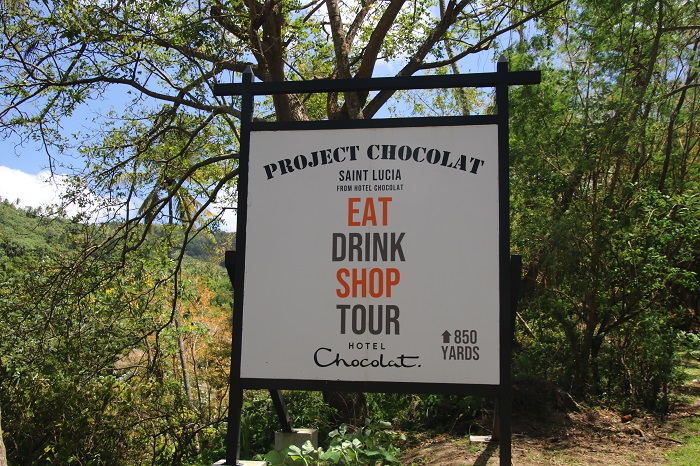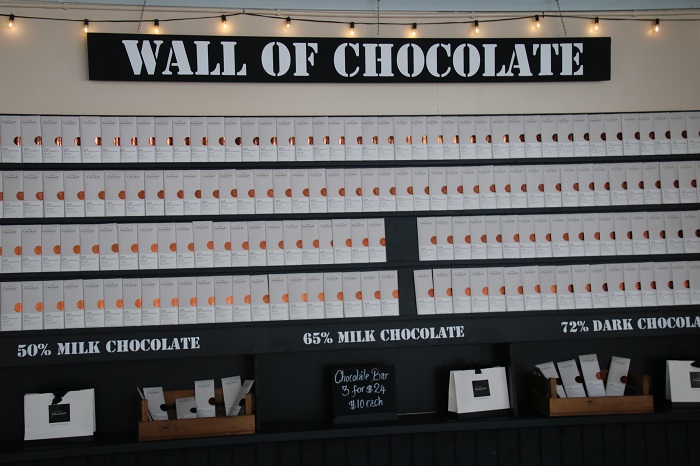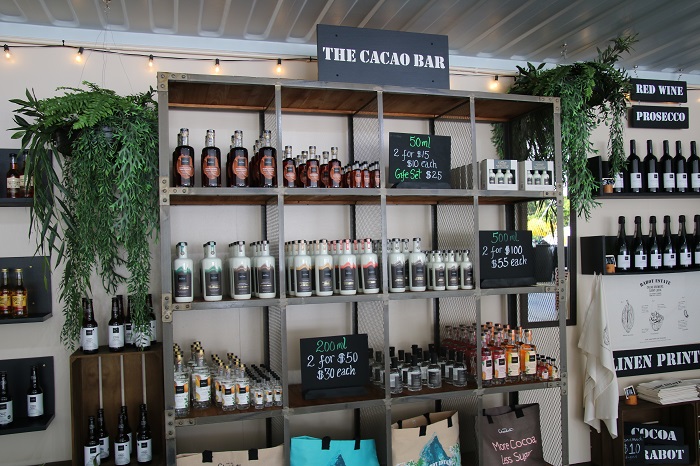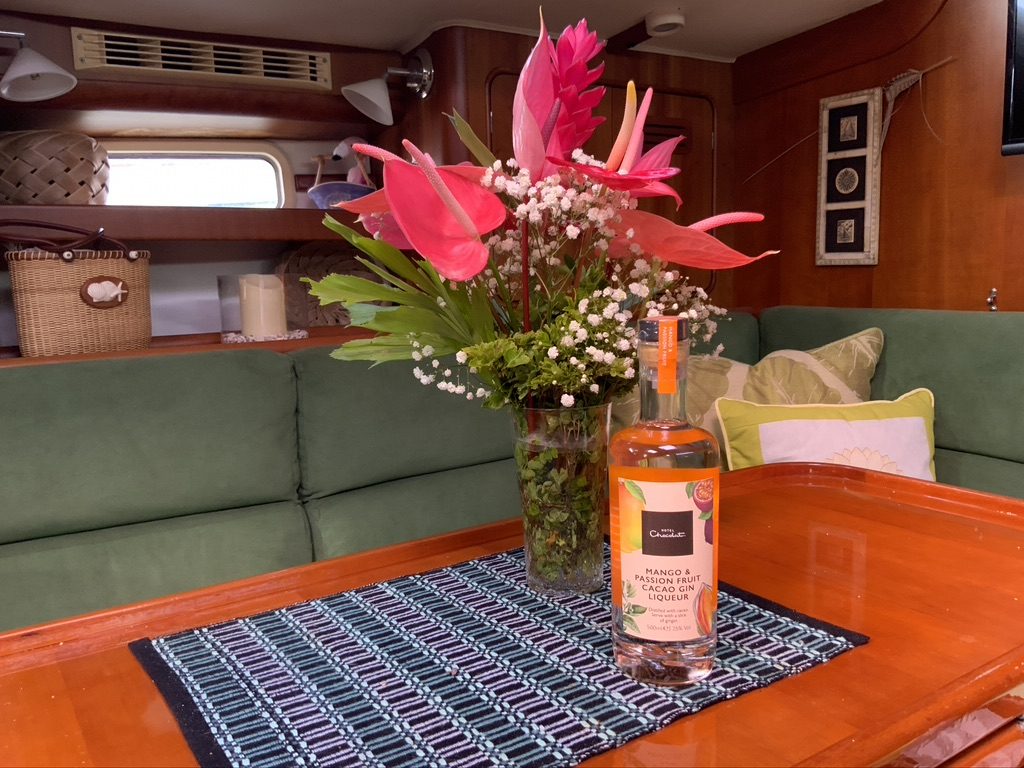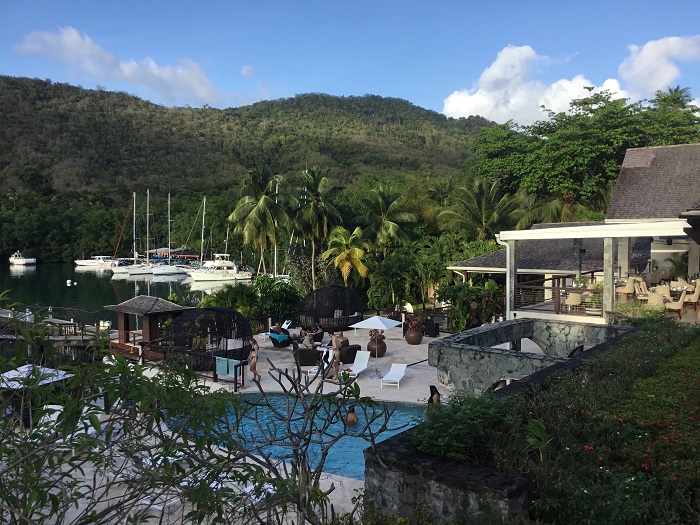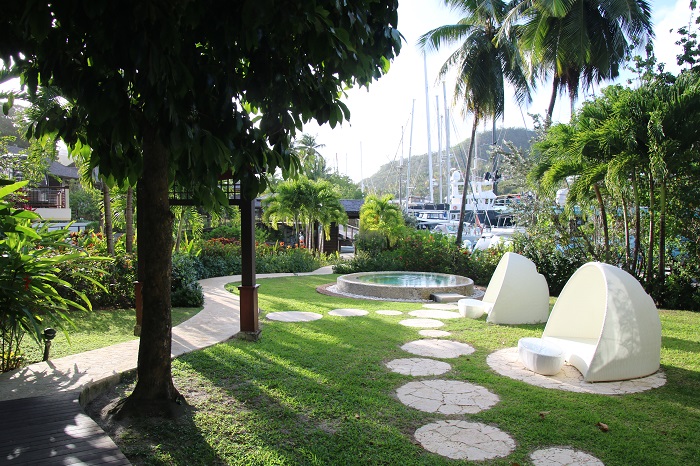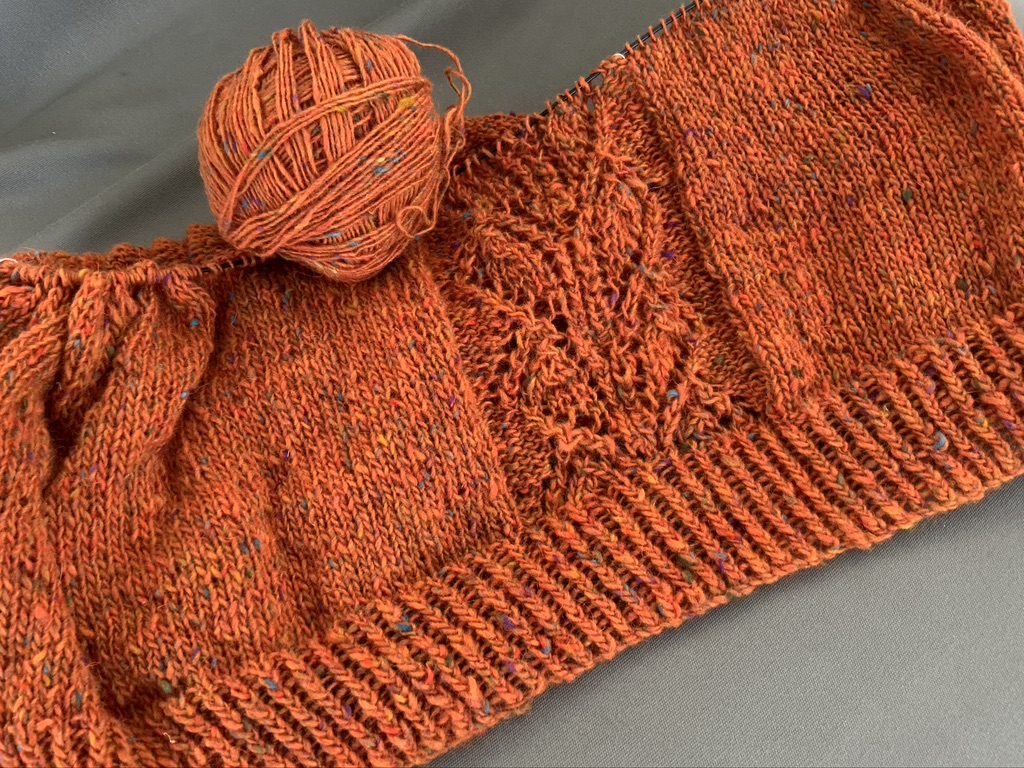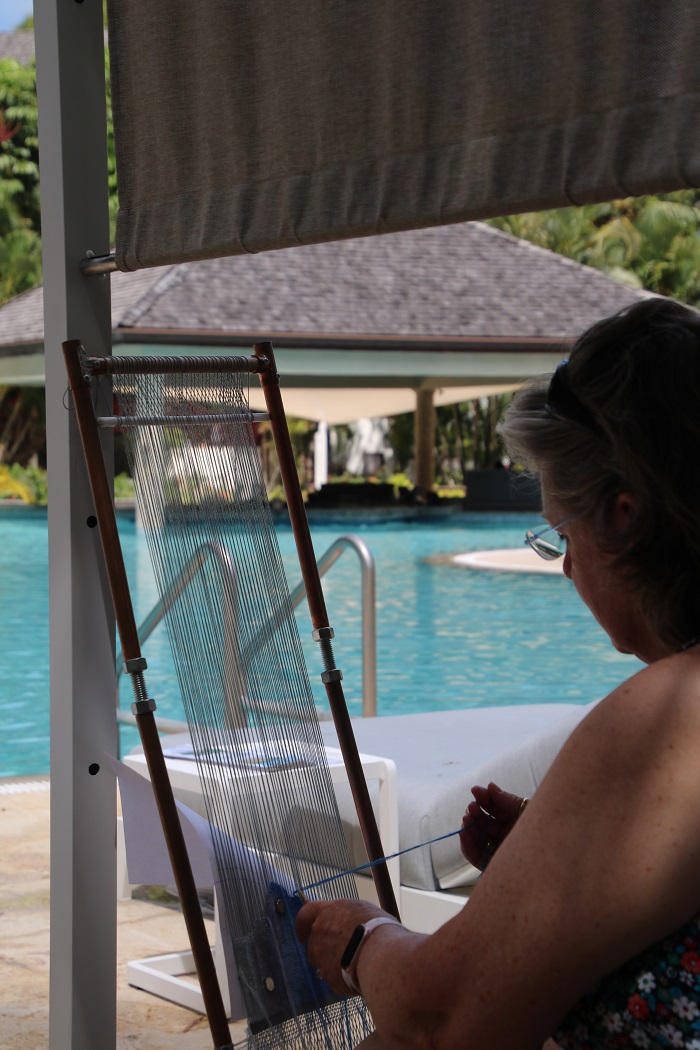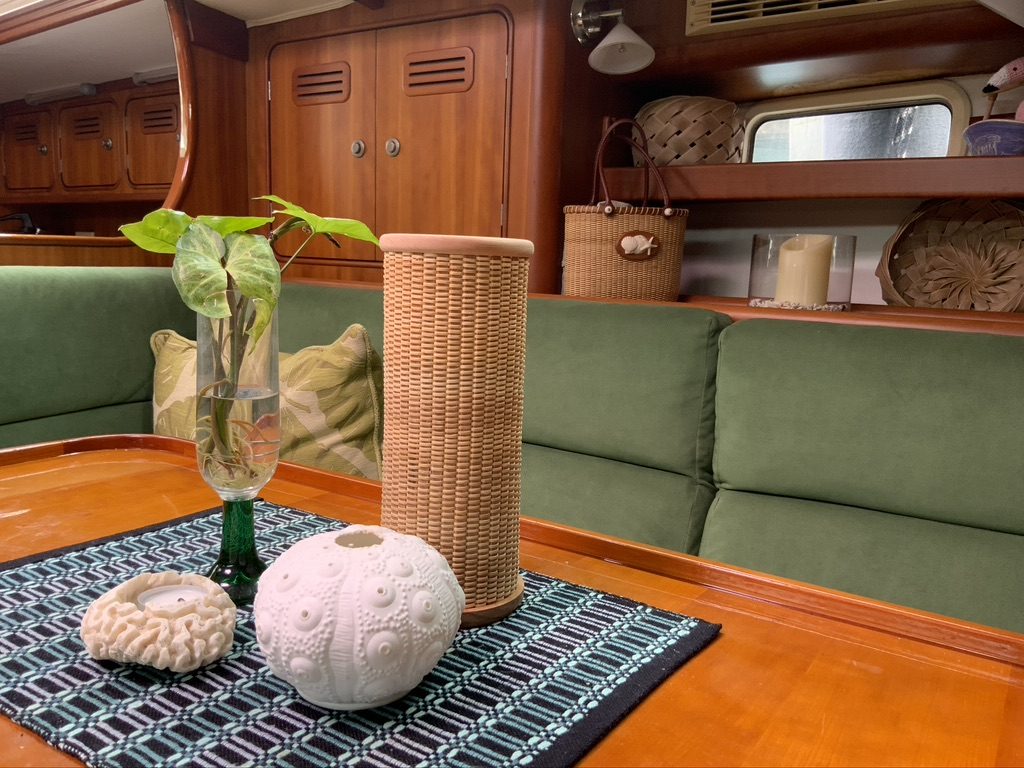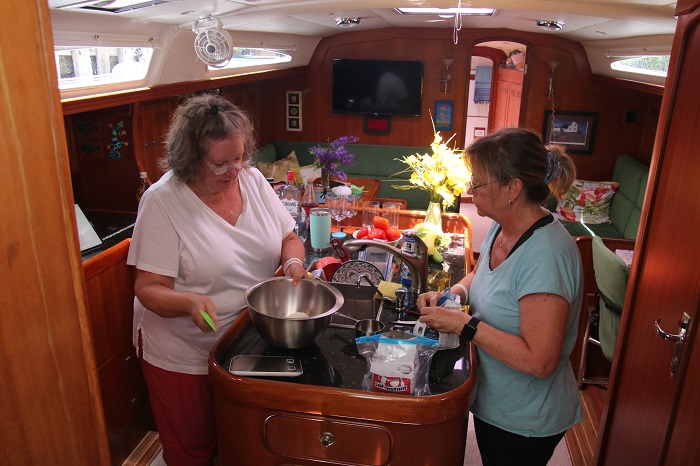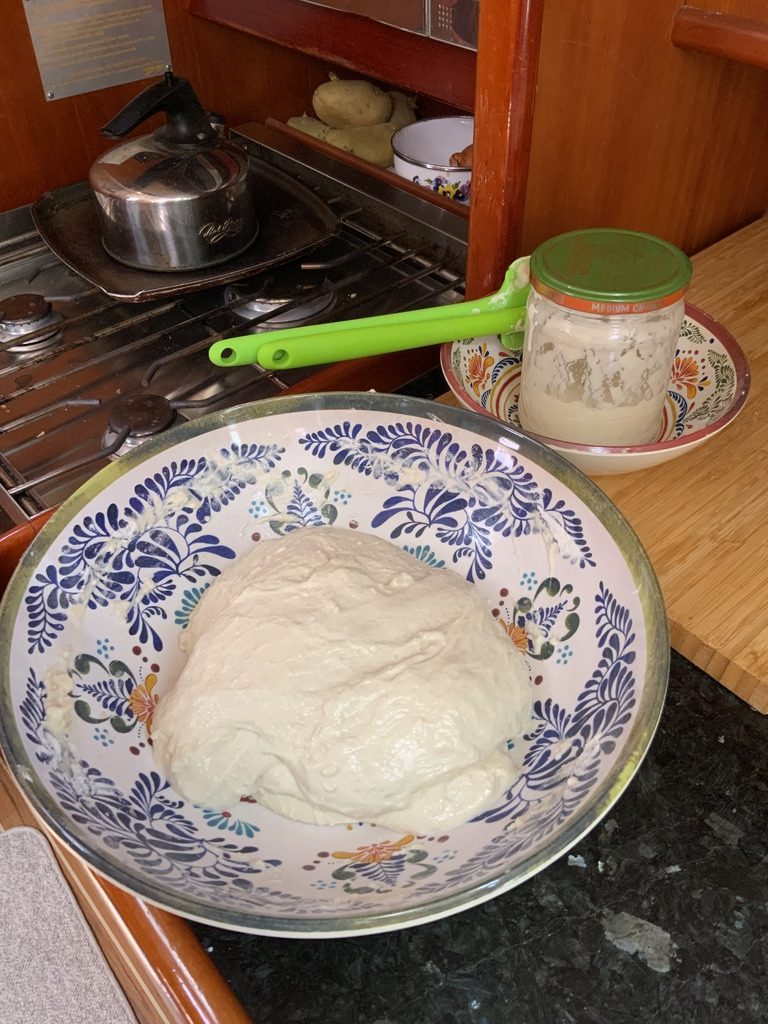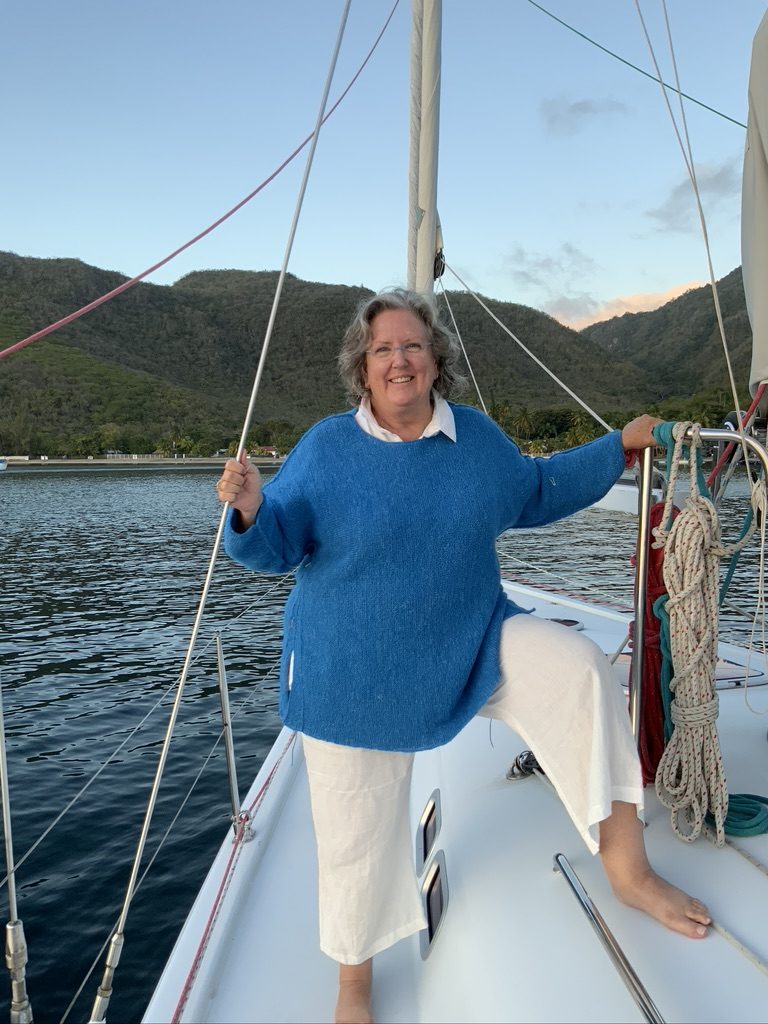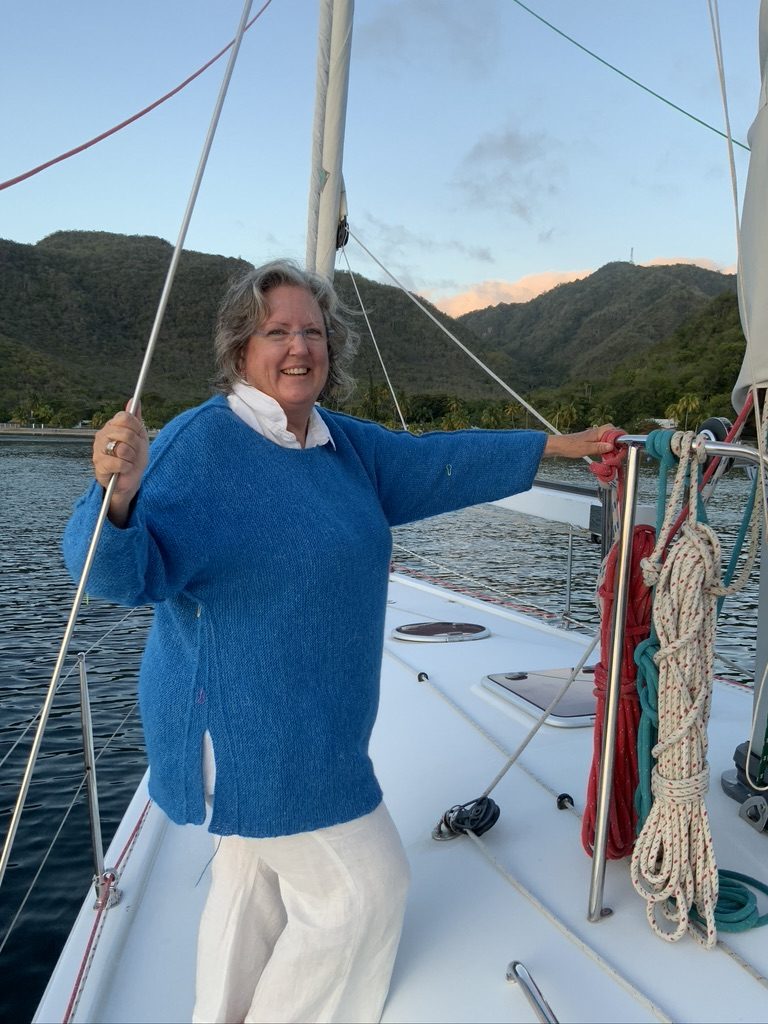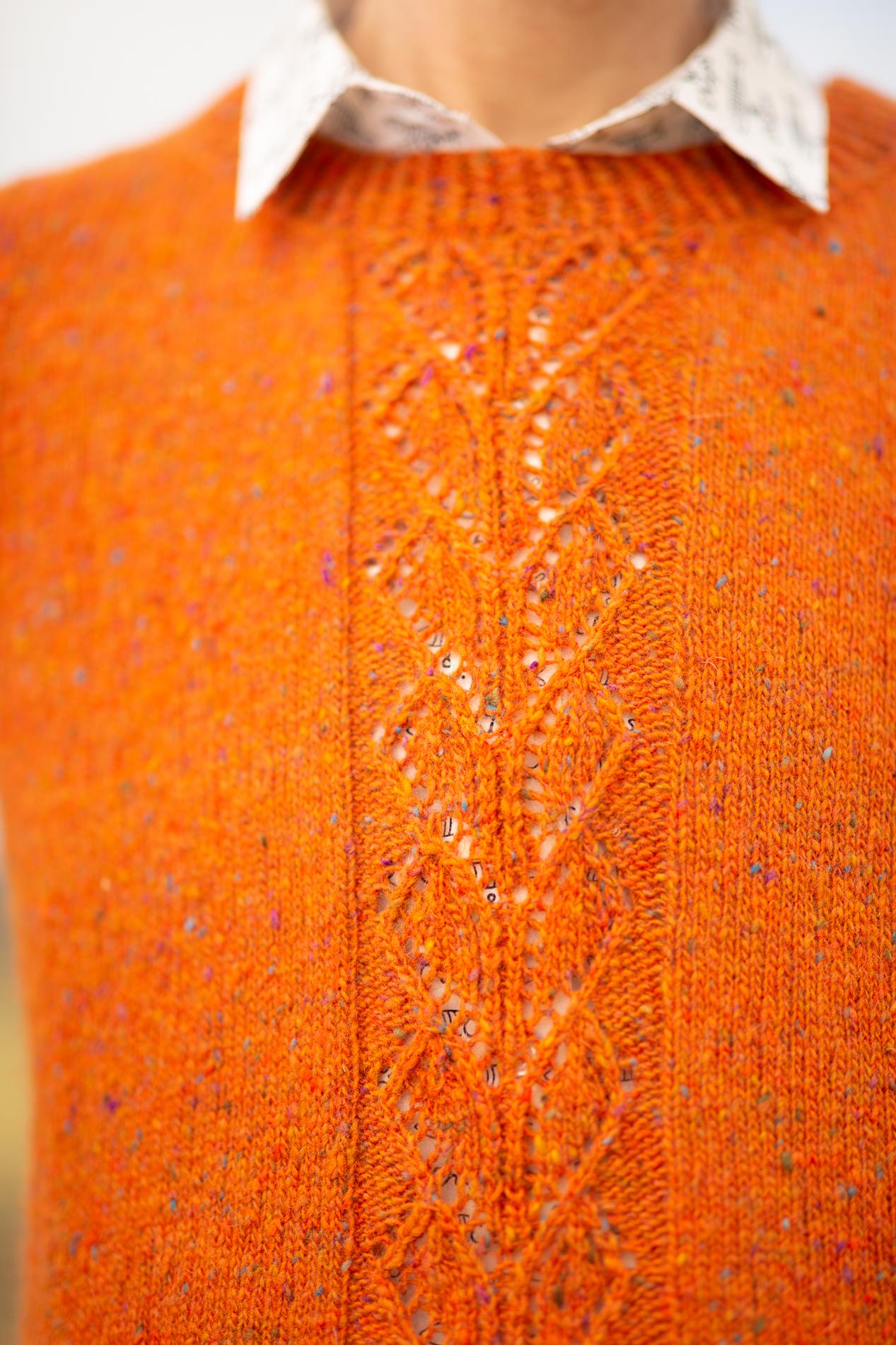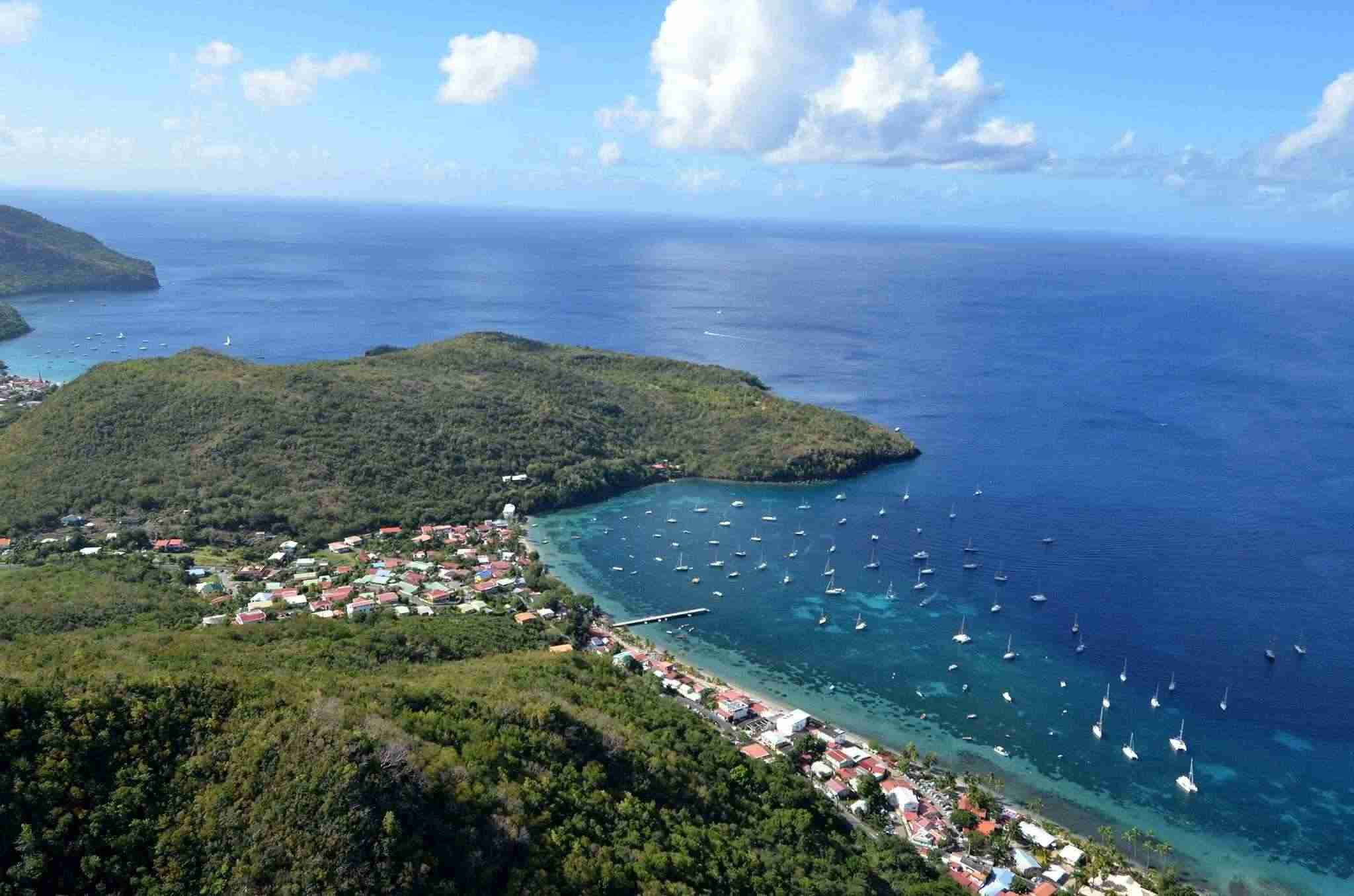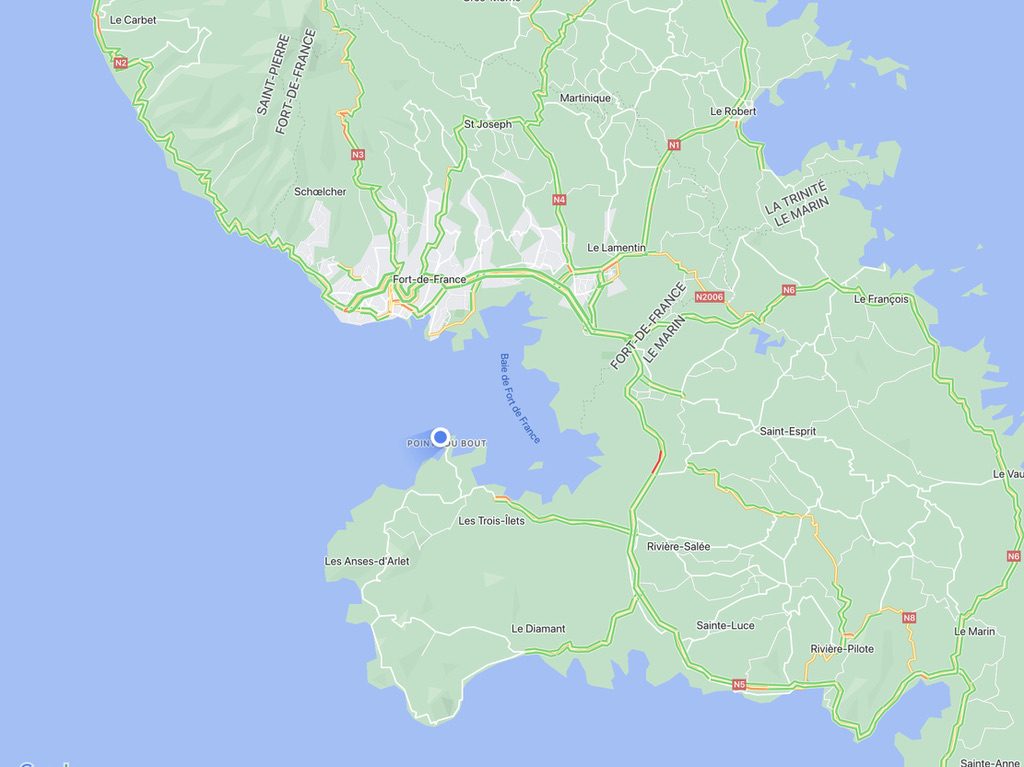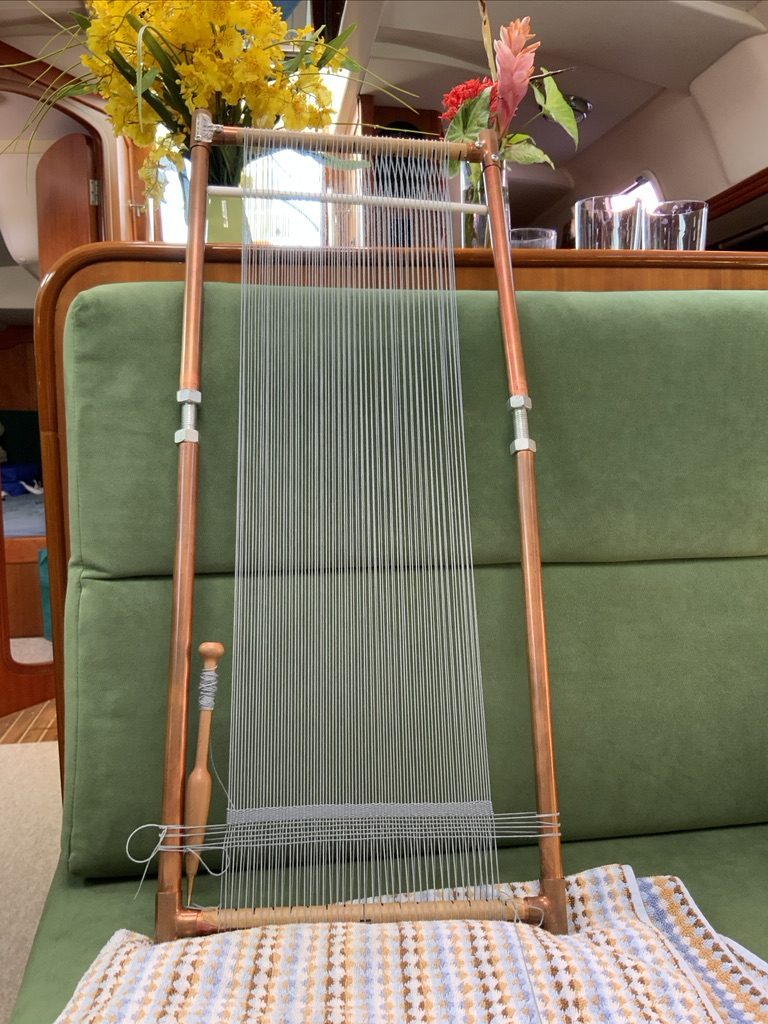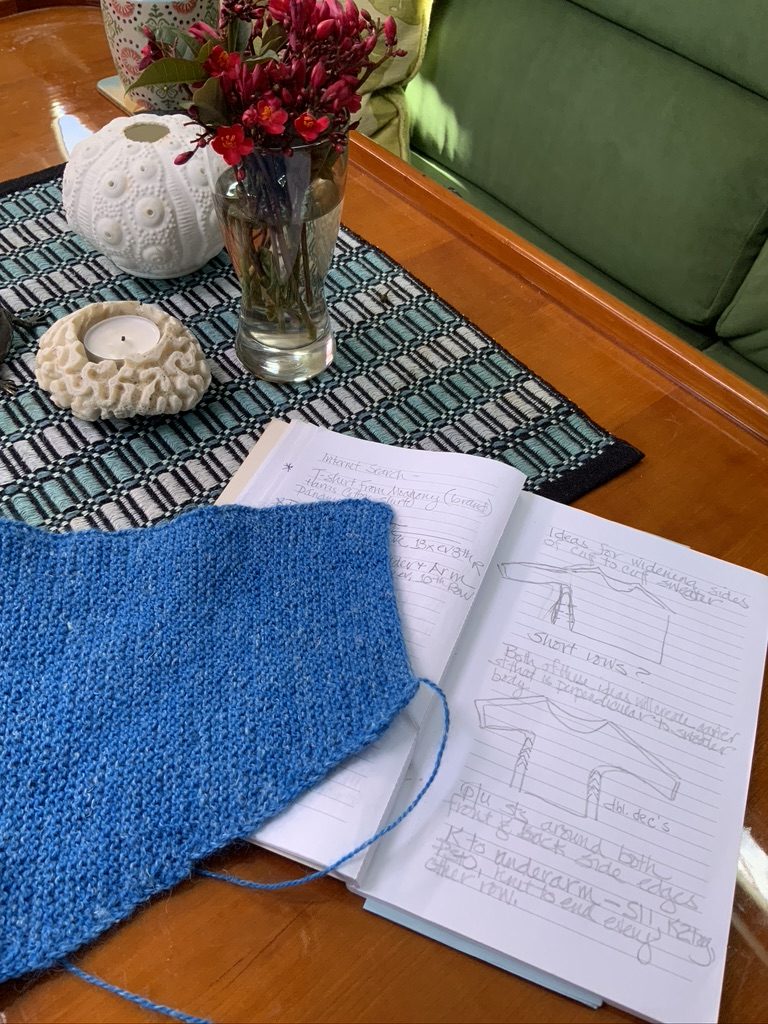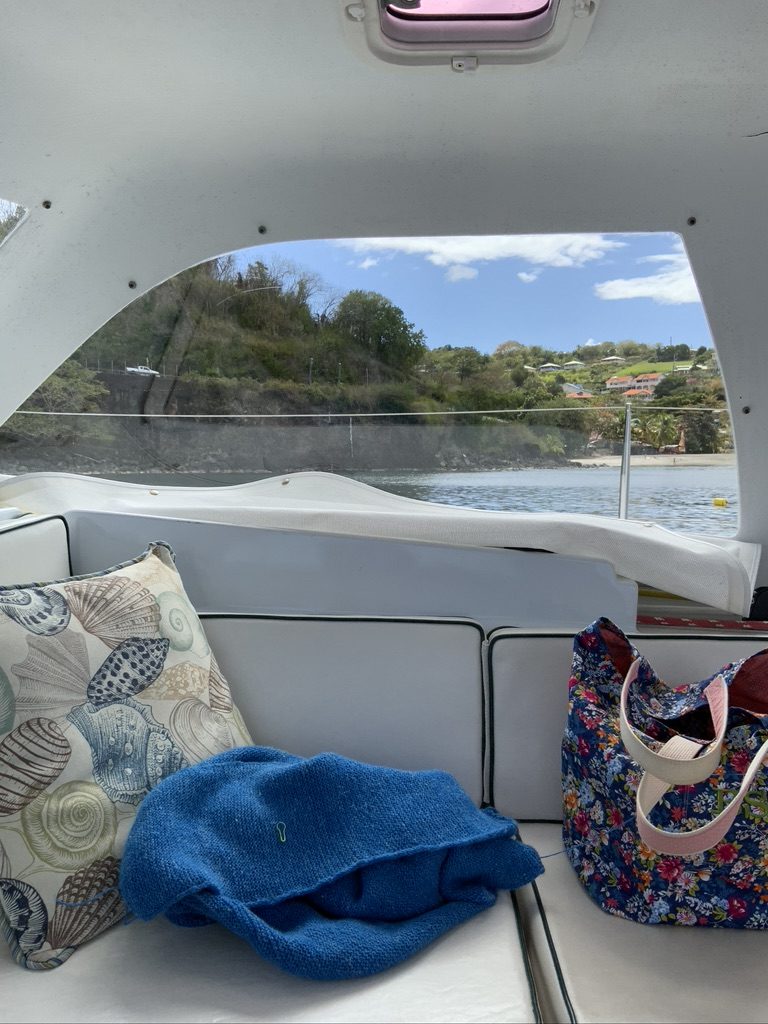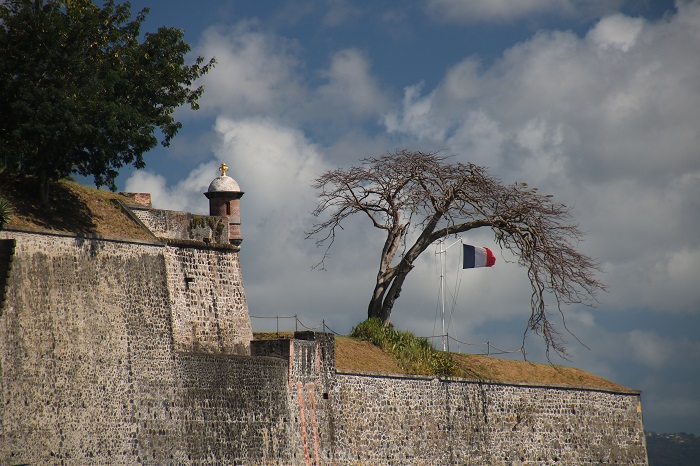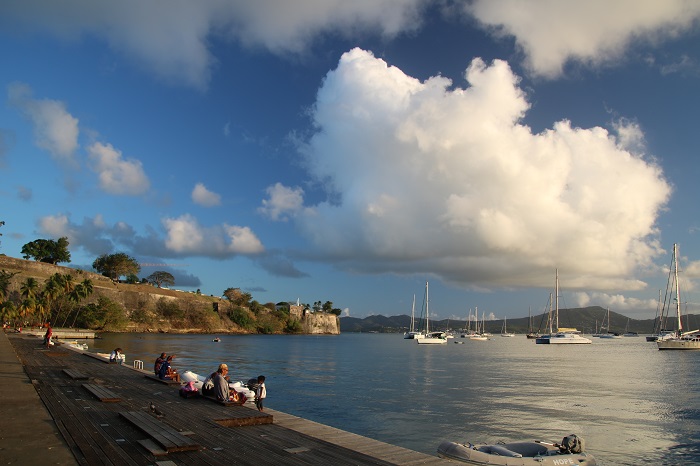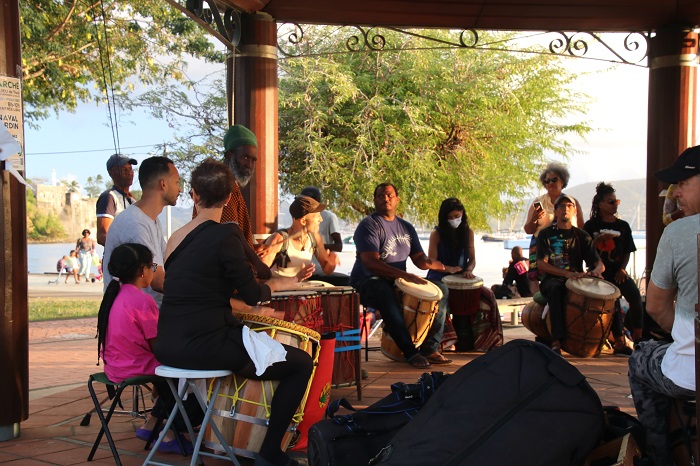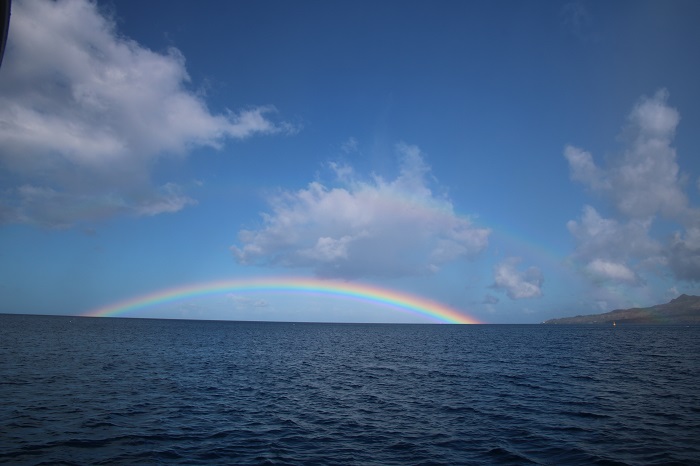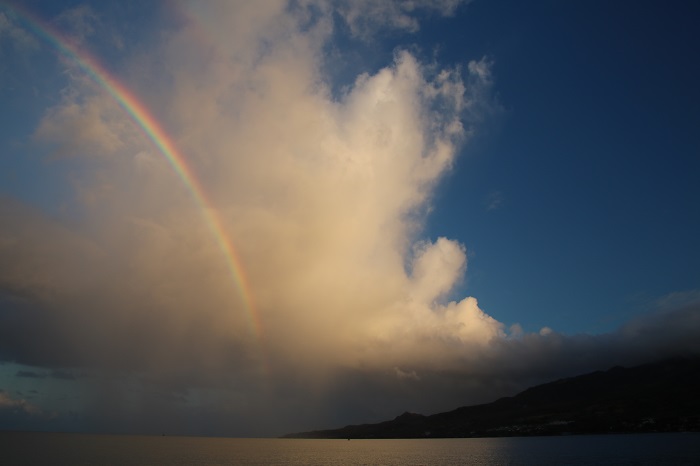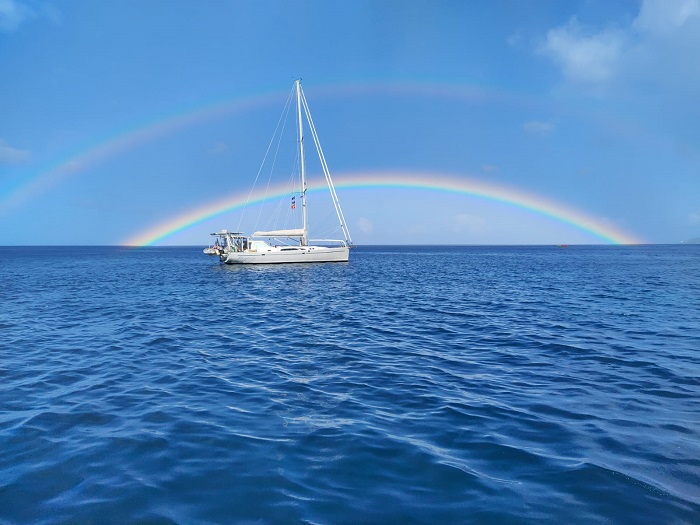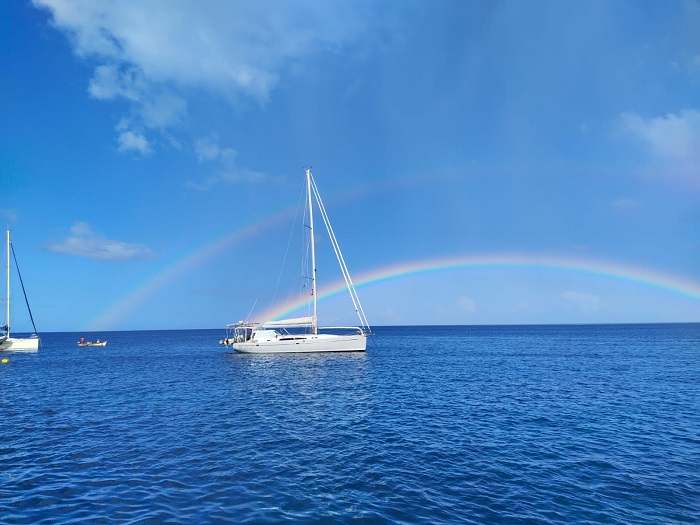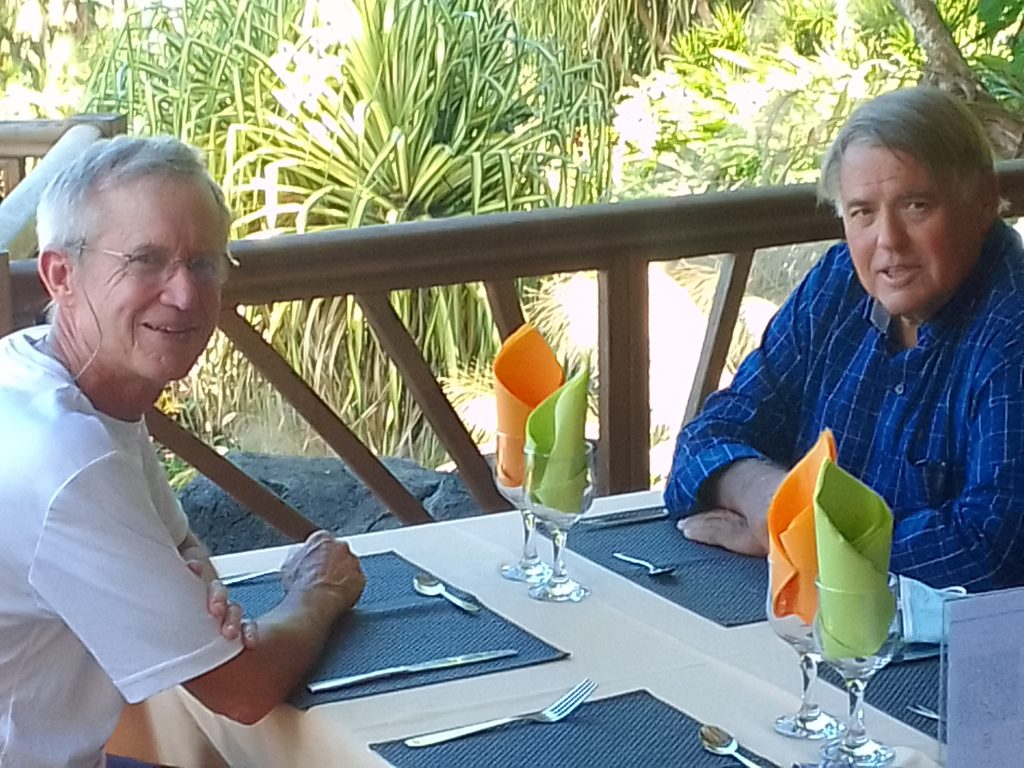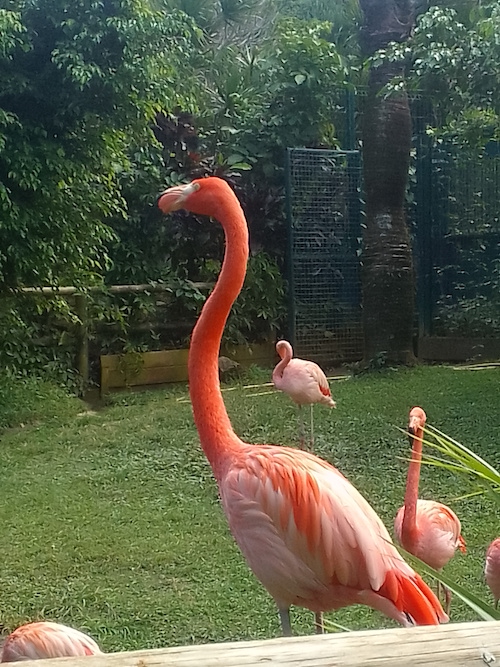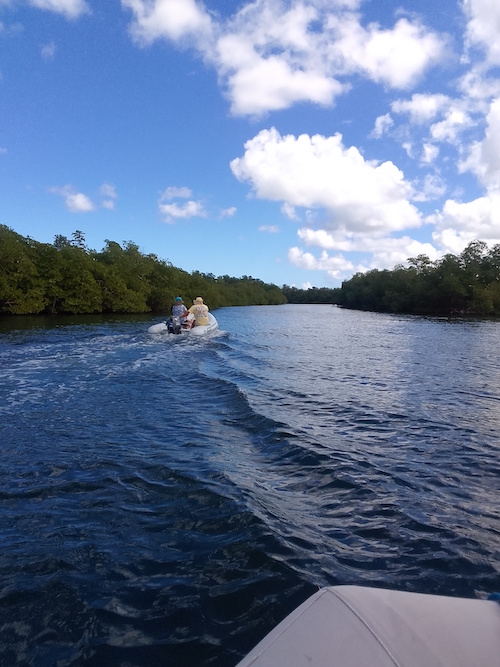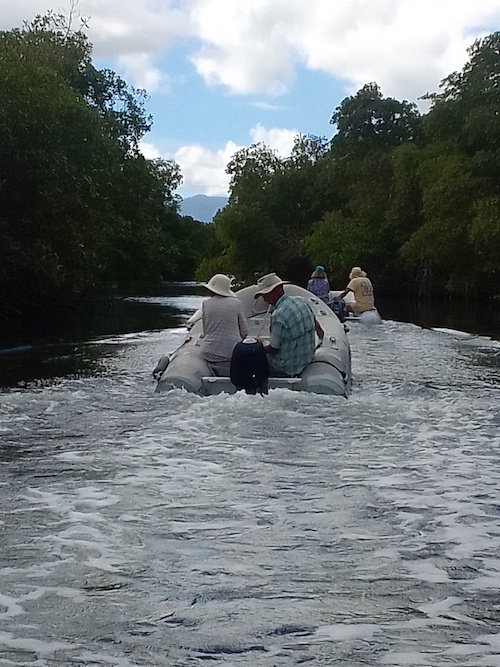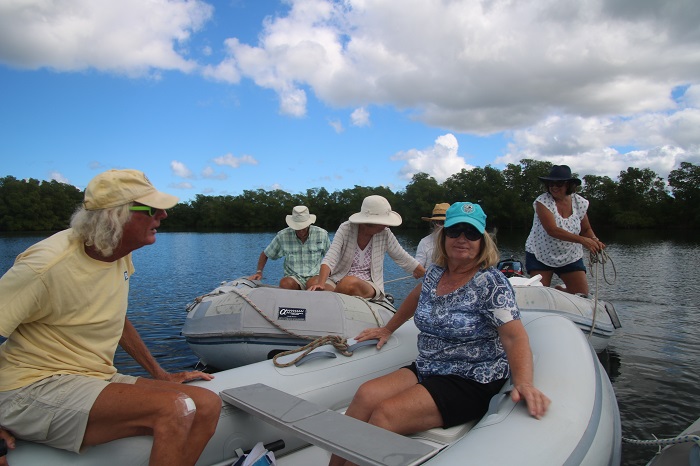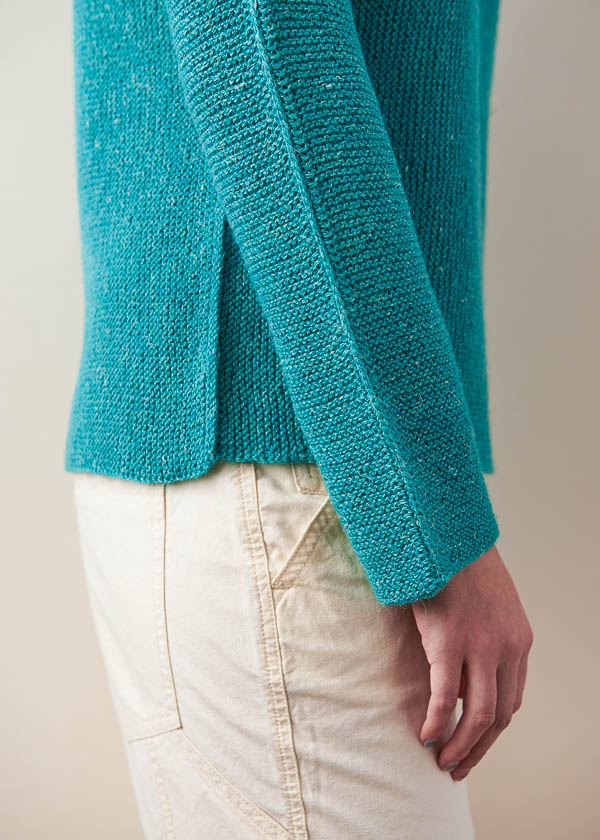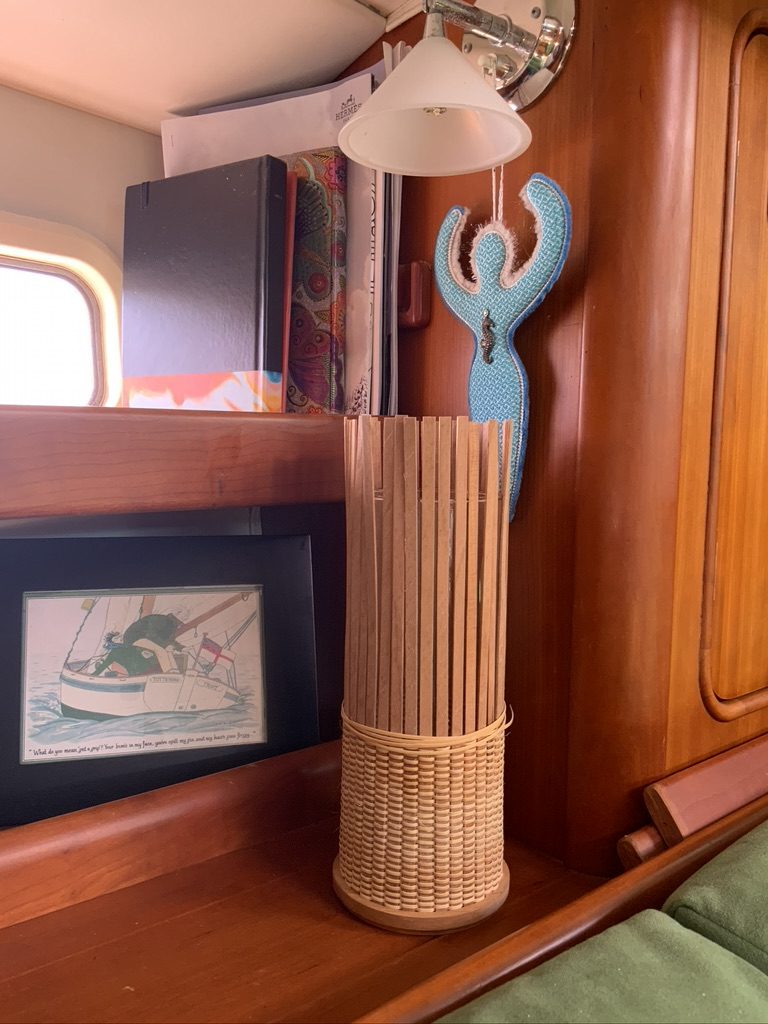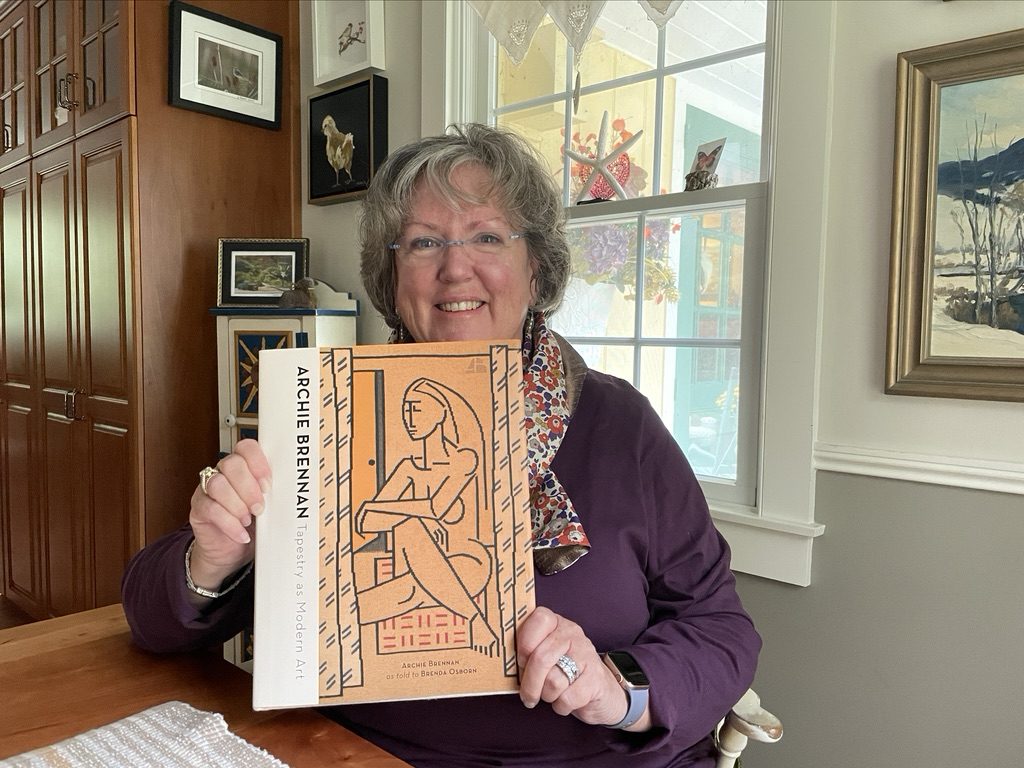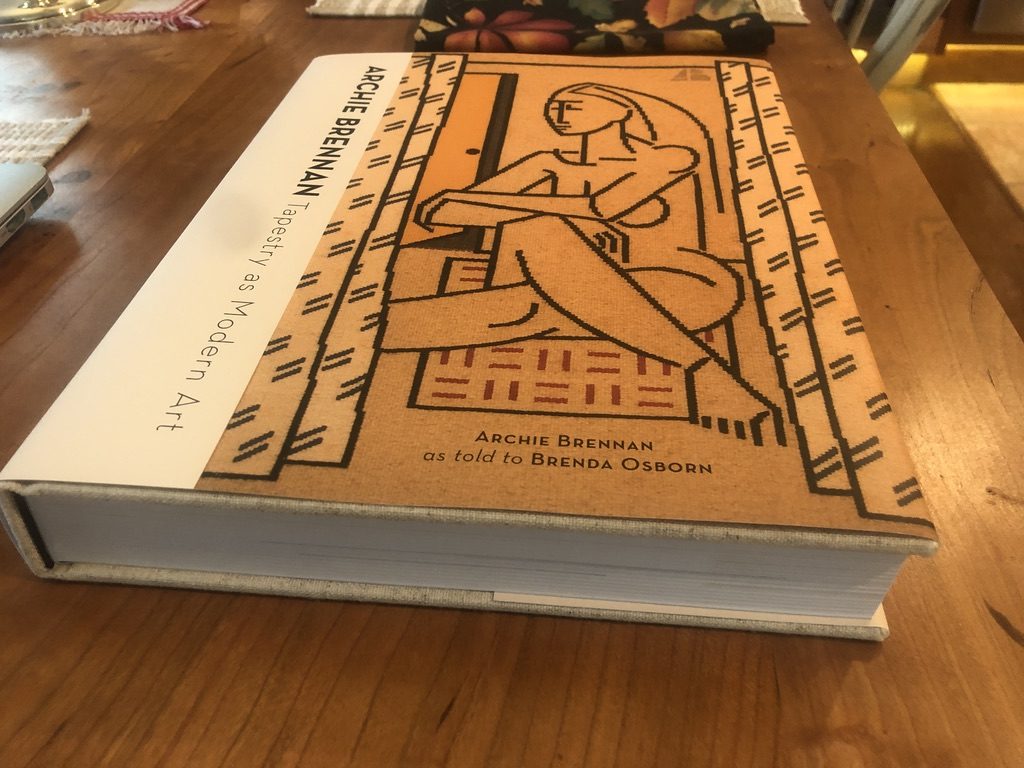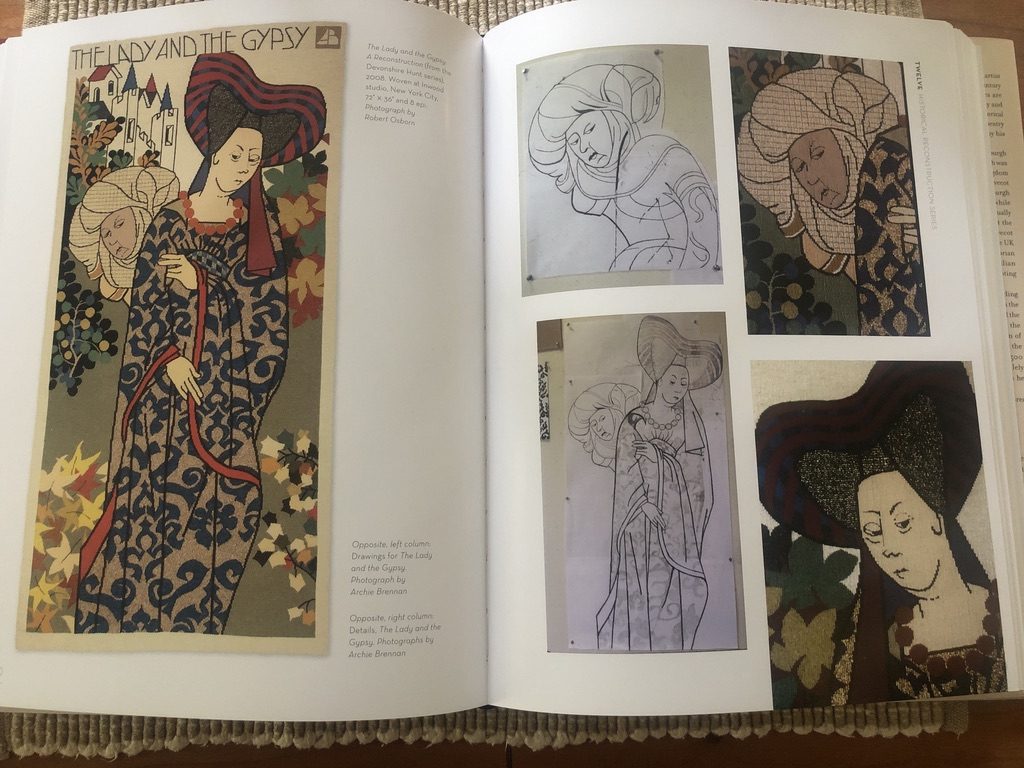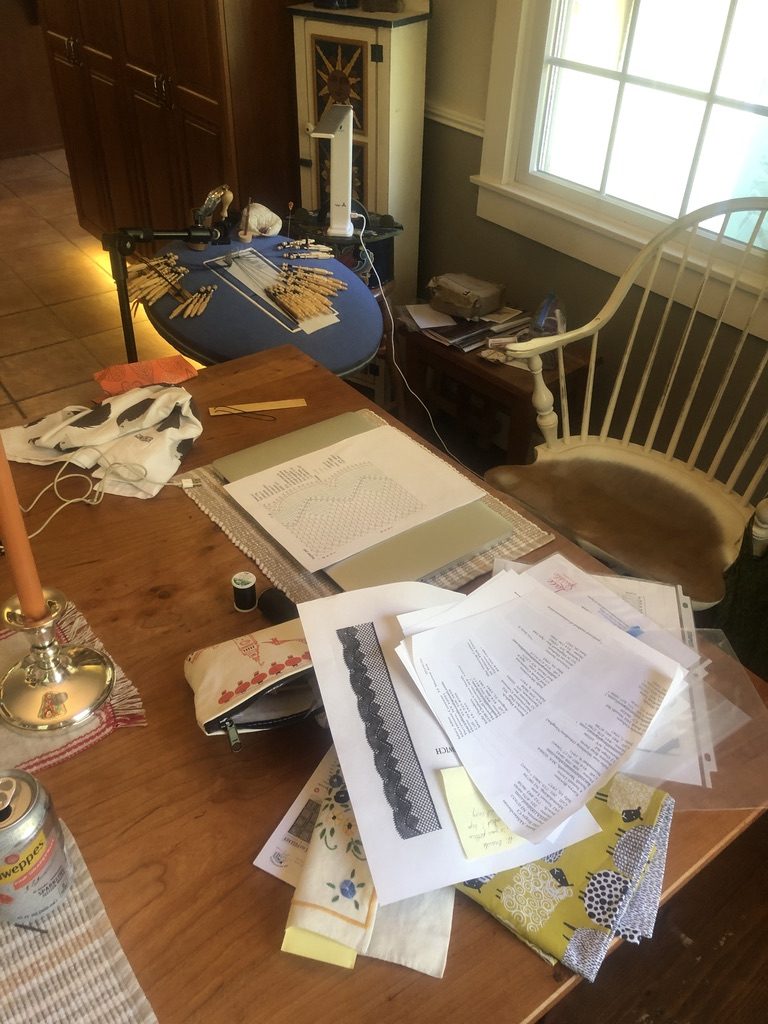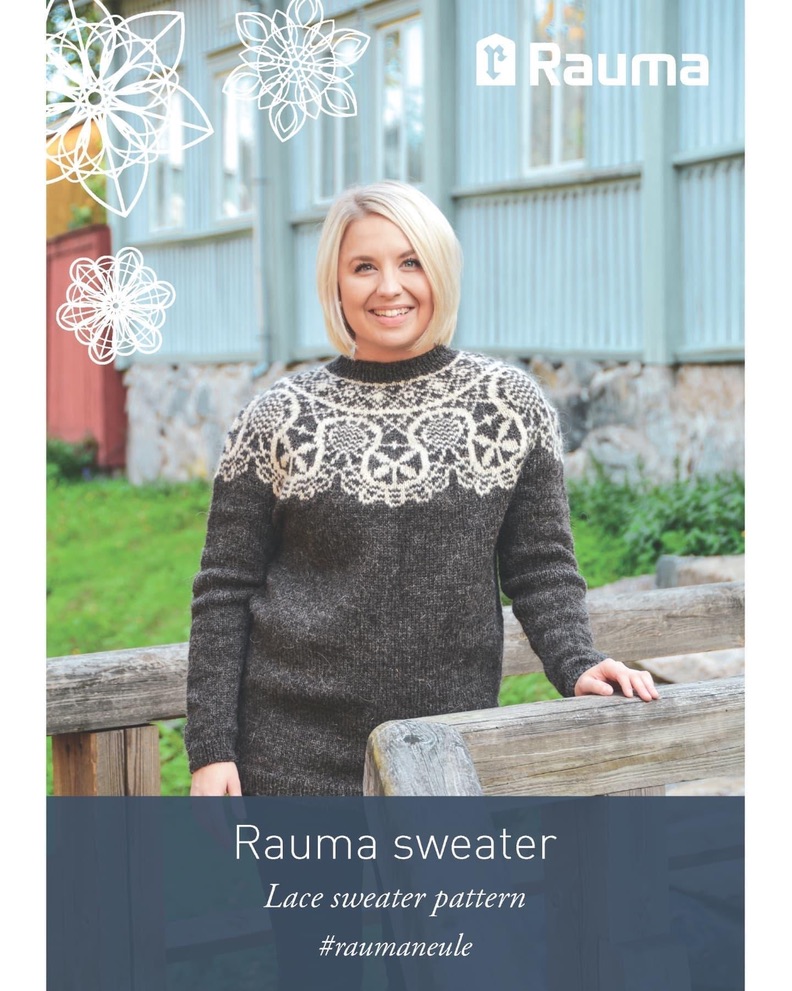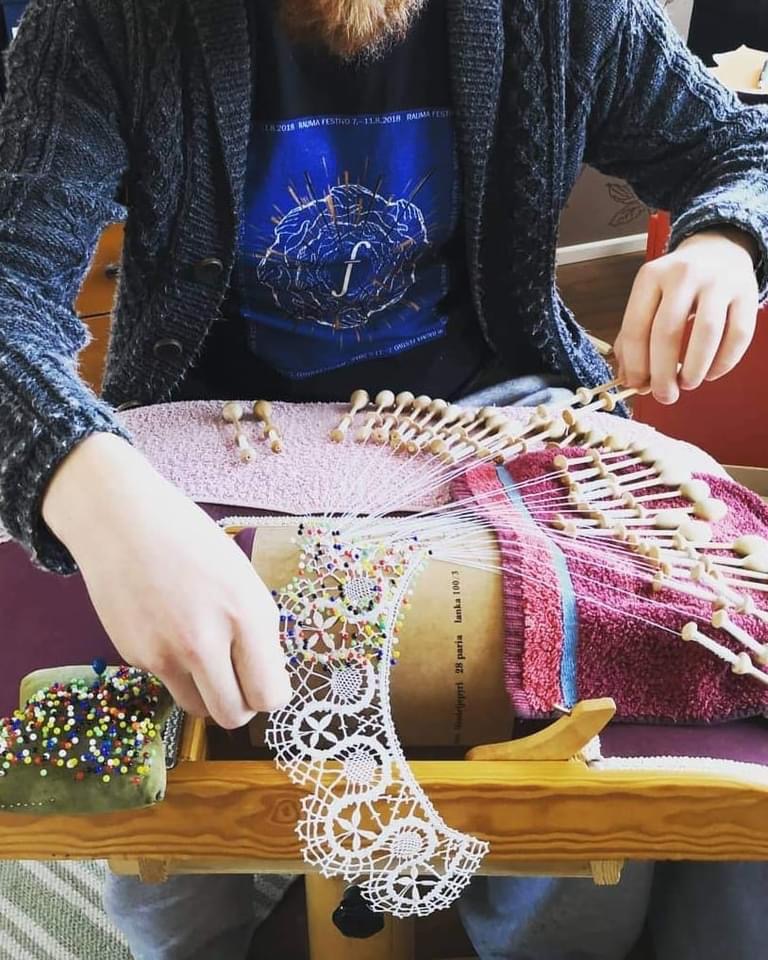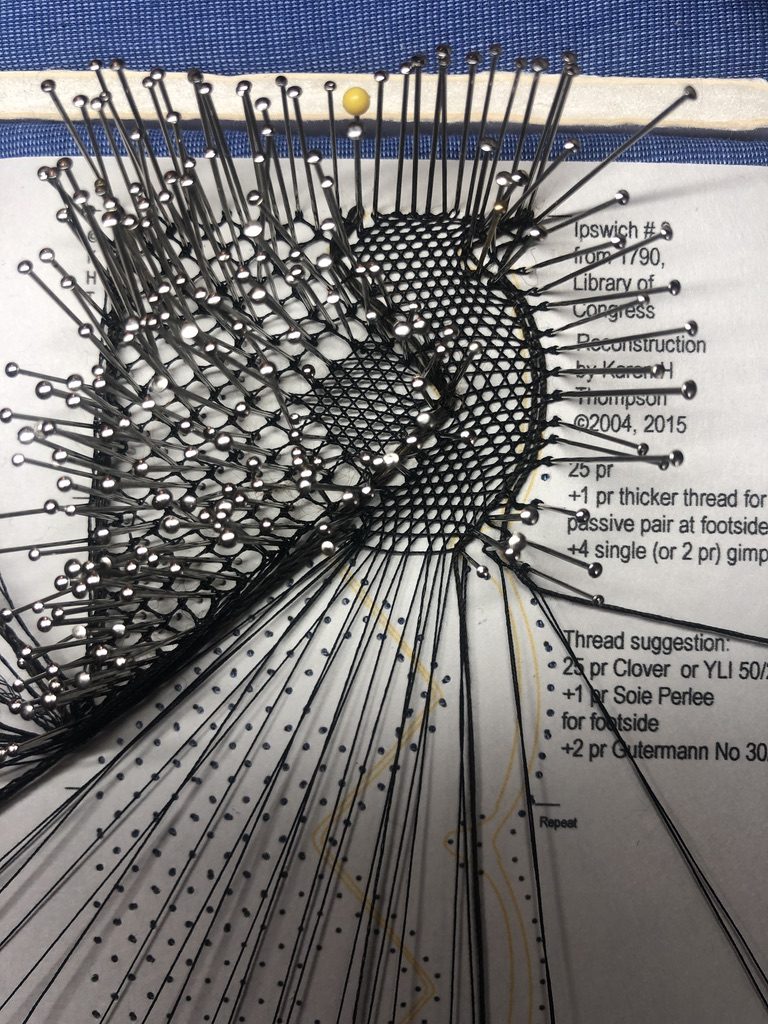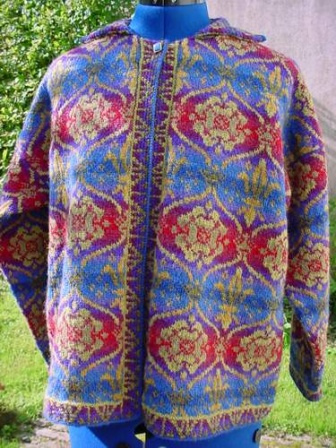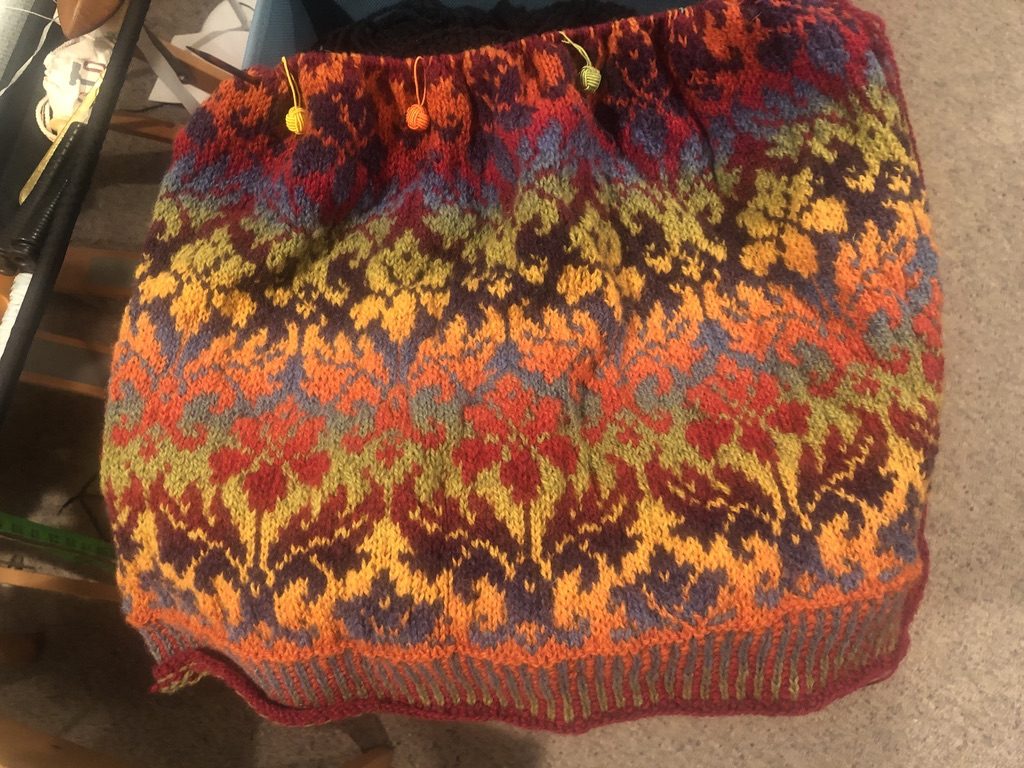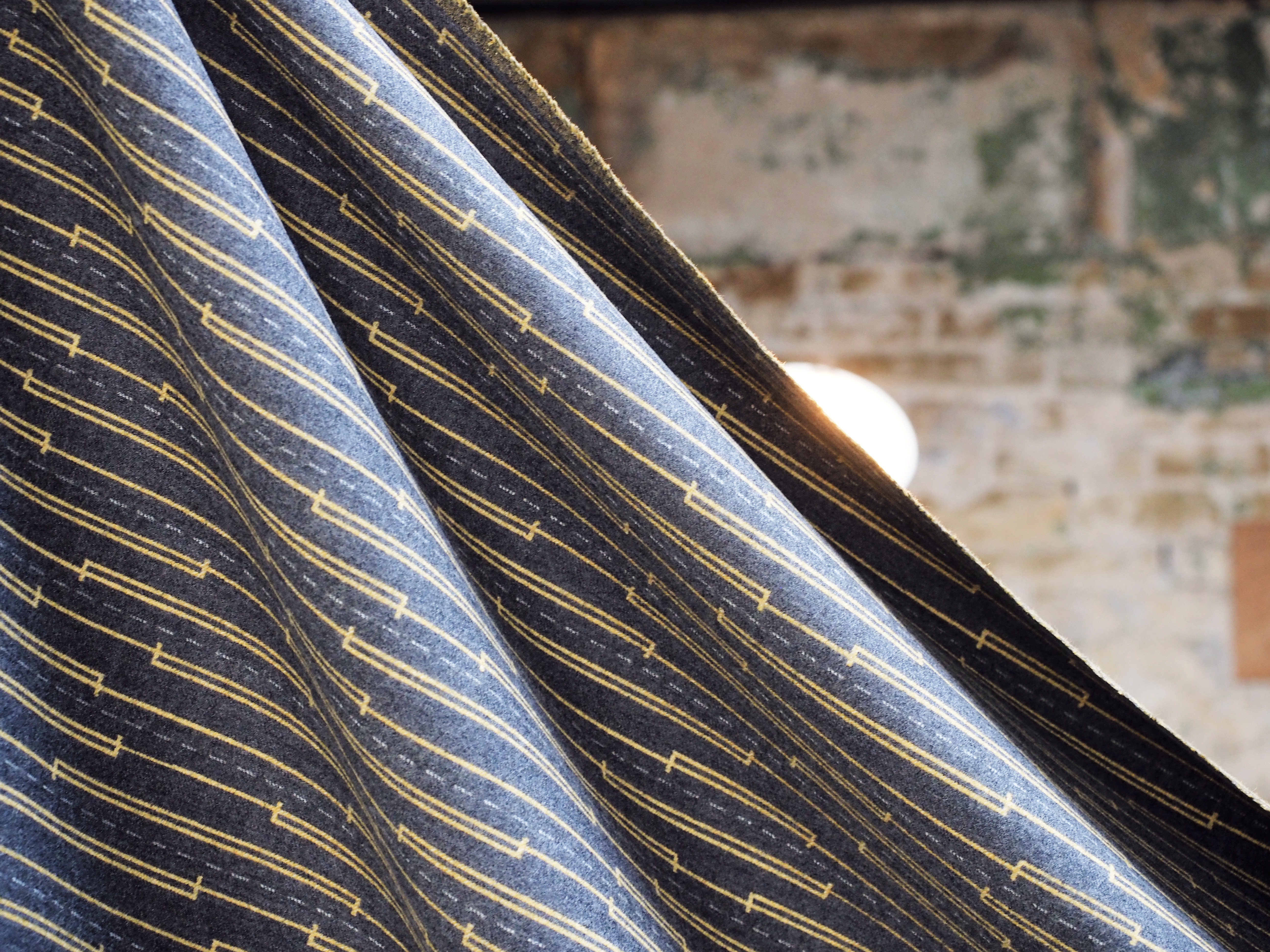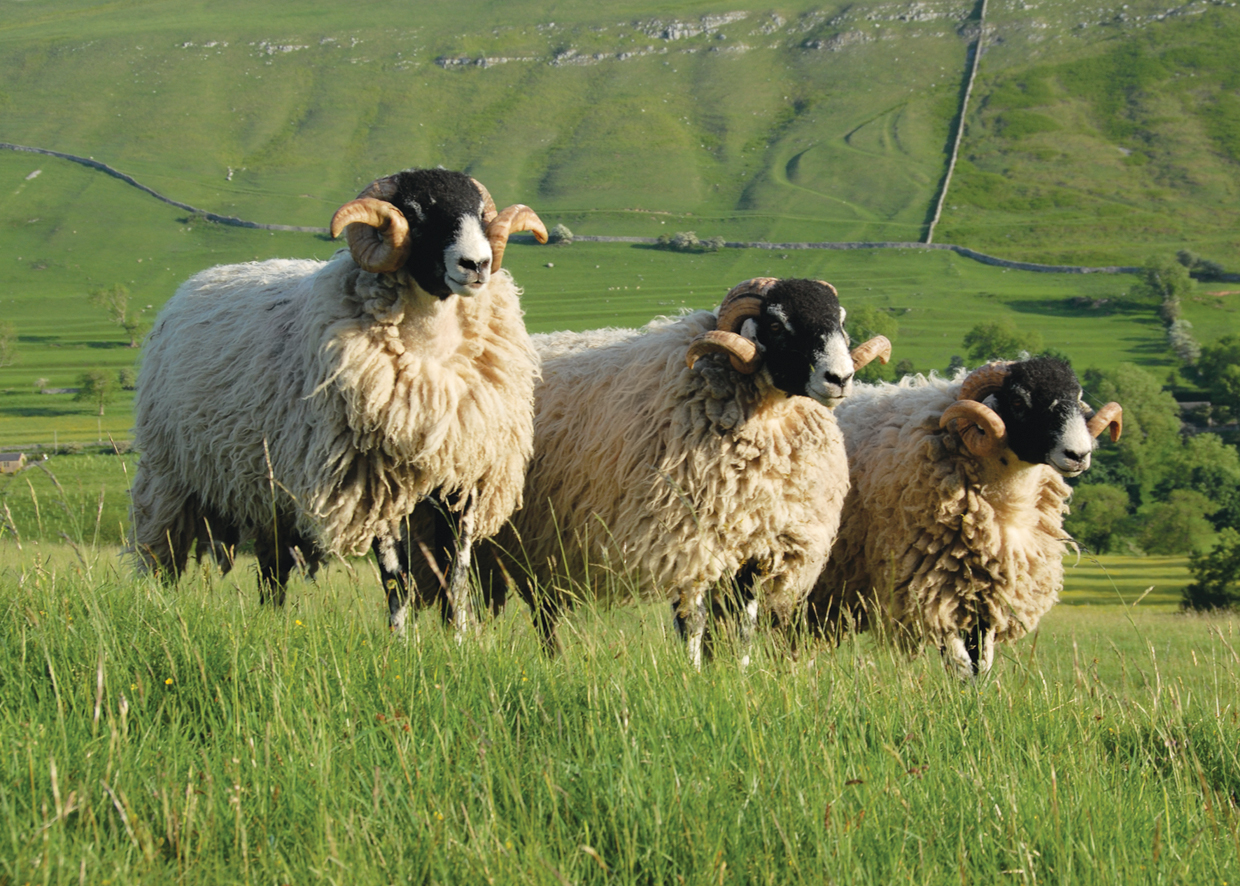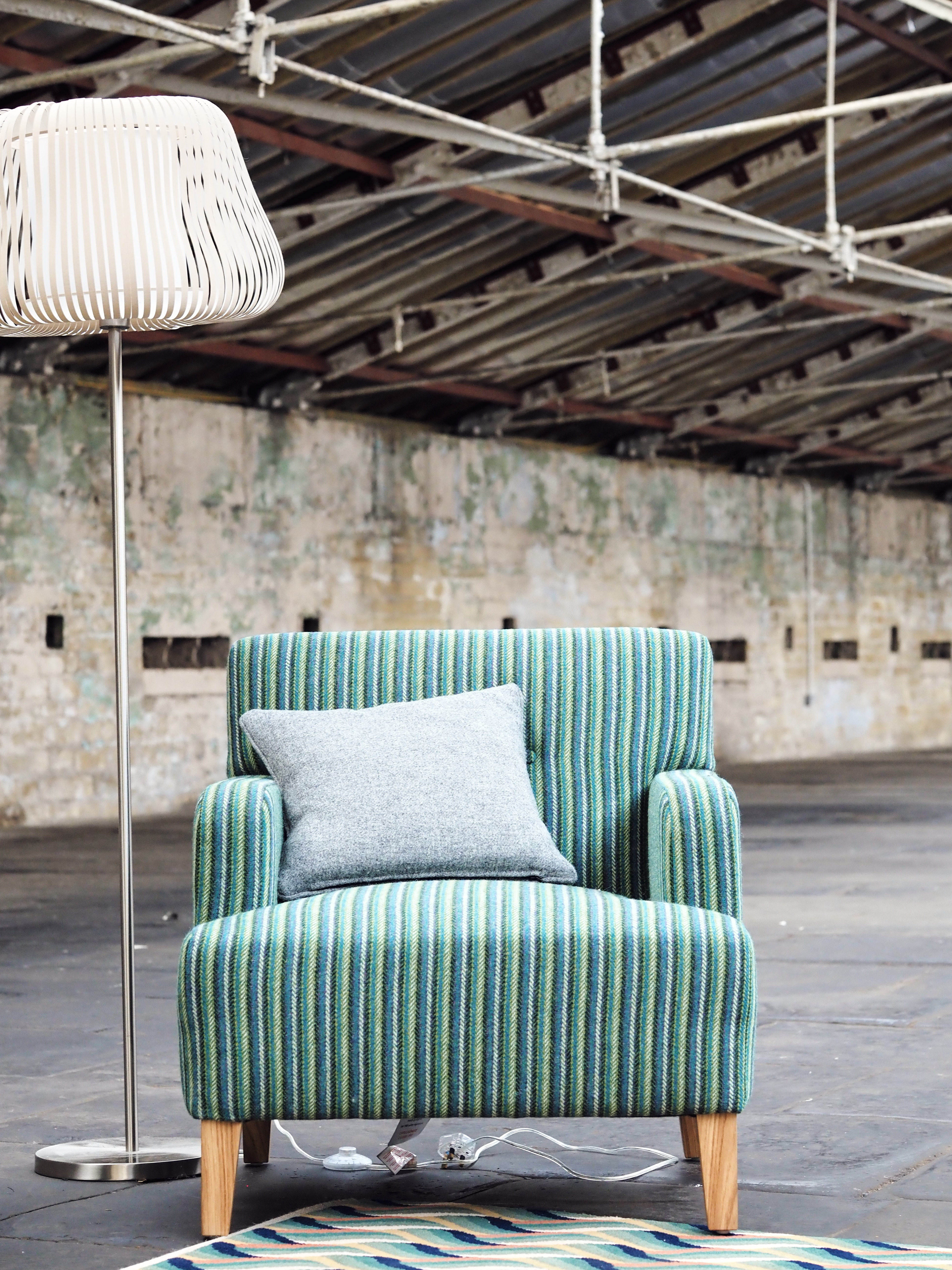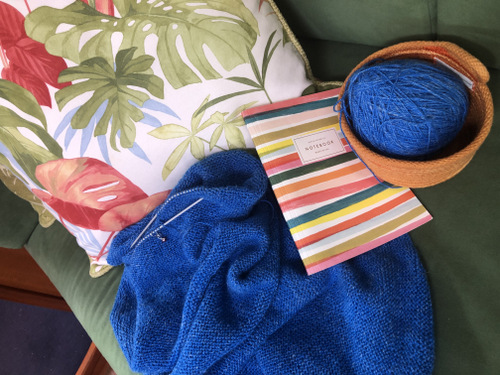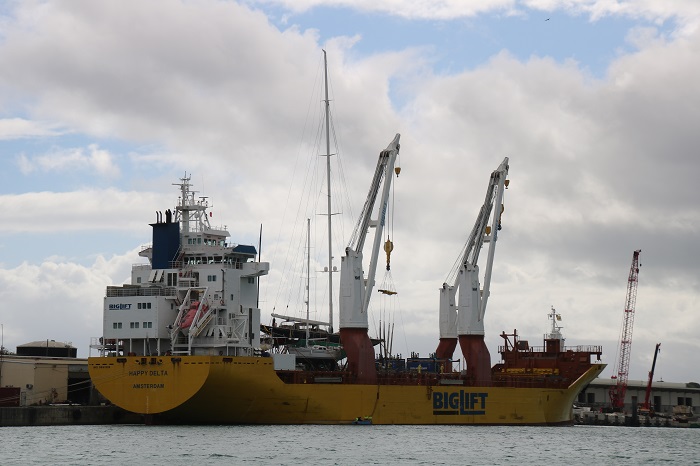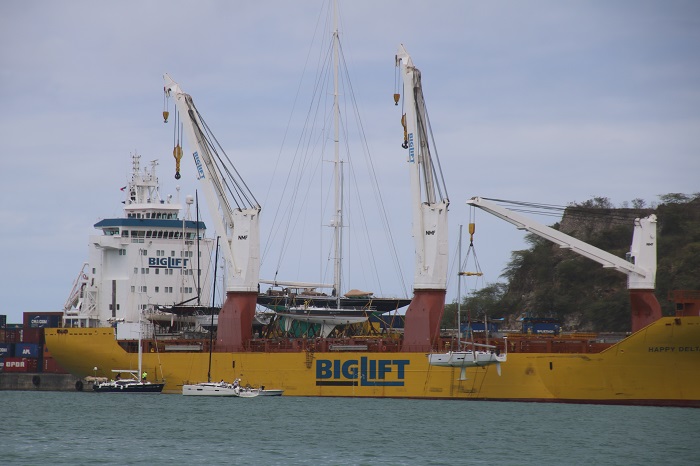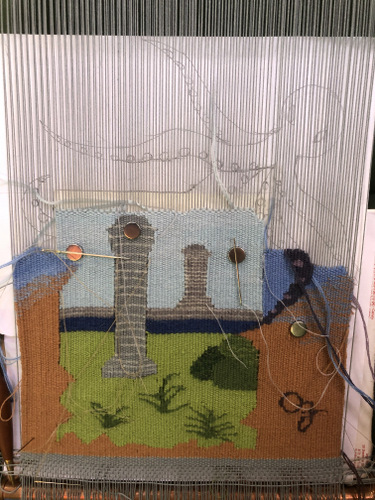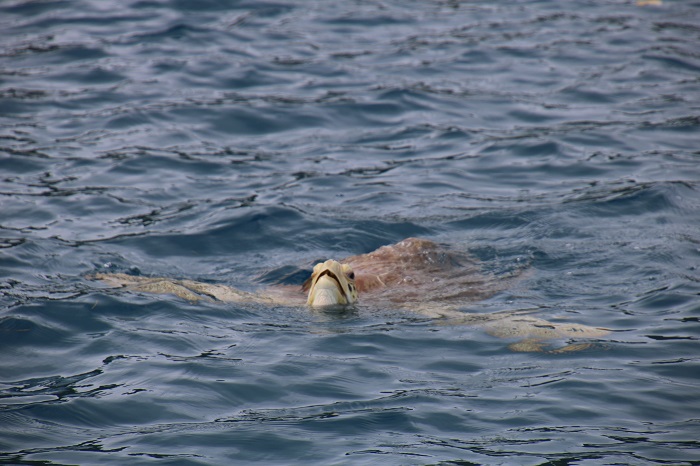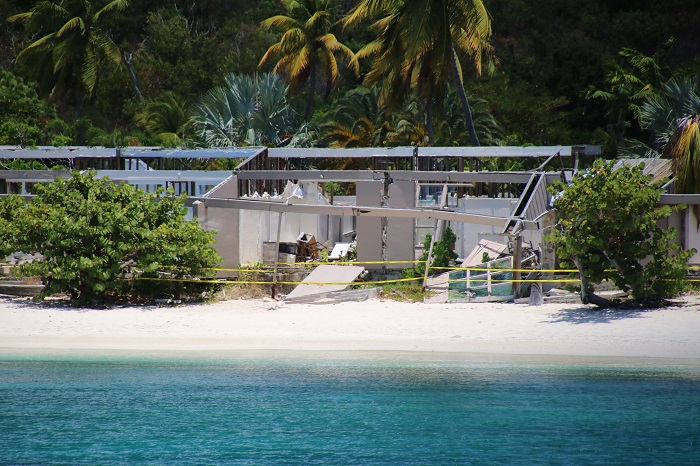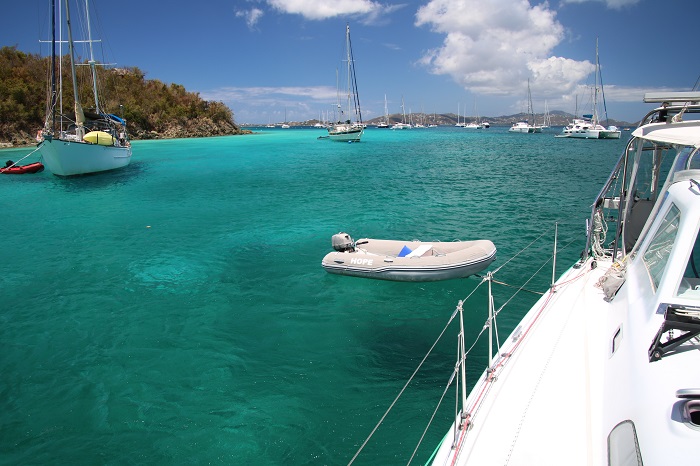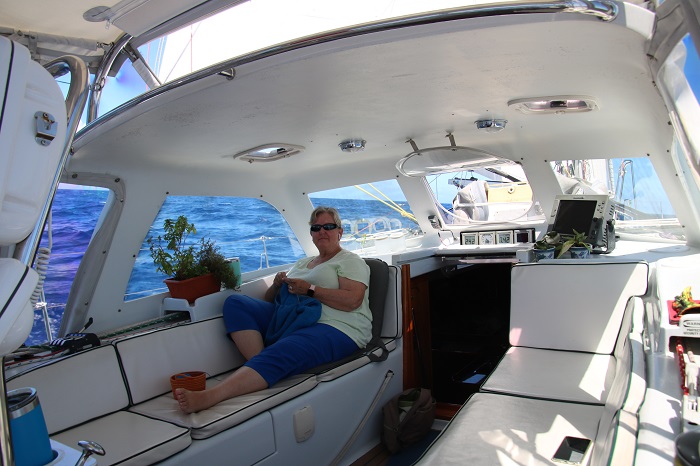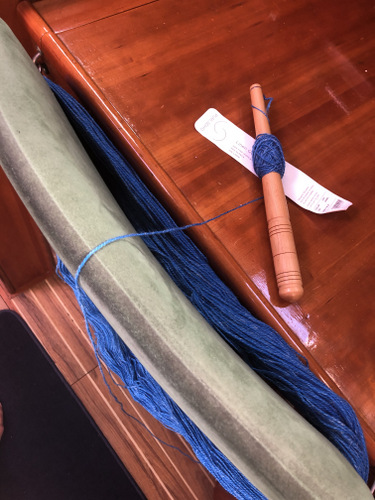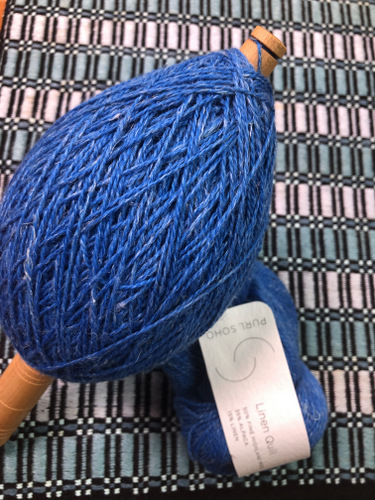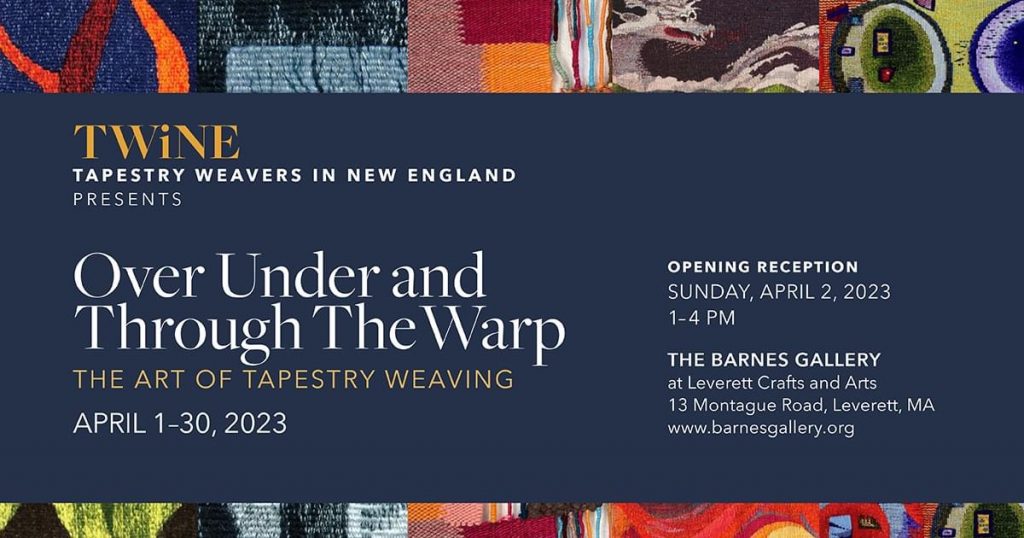The pre-modern world is still very much on my mind after seeing that ancient, worn piton and imagining the fearsome sea monster it would have seemed to an ancient sailor. Lately I’ve been thinking how ridiculously removed I am from nature in the modern world. I turn up our heat, turn down our air conditioning without a thought, I store our food in near perfect conditions in our freezer and fridge–even on a boat! I mostly leave home in the cocoon of my little mini cooper, so that there is not much weather that keeps me confined at home. Anyone who camps or lives on a boat knows that weather rules everything we do.
This morning, while having breakfast at a cafe right on the dock in English Harbour, Antigua, we all felt the wind gather speed. One person at every table jumped up to run back to boats to close hatches so our beds would not get wet in the coming squall. Meanwhile, we all continued to sit at our dockside tables, out in the weather, rain or no.
On our sail back to Antigua from St. Lucia we experienced a moment of epic nature that has stayed with me over the past two weeks or so. The low angled light of morning is perfect for watching flying fish jump out of the water as the keel of Pandora slices through their fishy schools. It’s amazing to watch them leap out of the water, their winged fins flapping furiously. In that perfect light their fins sparkle like diamonds and remind me of what fairie wings might look like, similar to a dragon fly’s wings, but entirely white. I’ve never seen a dragon fly with white wings. Some of these fish can fly so far, it is quite remarkable, like skipping stones made of faceted diamonds. I spent a lovely hour watching them glide above the water as Pandora’s bow sliced through the waves. Shortly after the fish started flying we were visited from above by several brown boobies. I thought they were gannets, but I’ve now found out better.
There was such a symmetry between watching the fish glide through the air, skimming over the surface of the indigo water, while birds glided high above us and swooped down so close to our bow and our sails. Those birds are great navigators maneuvering so close to Pandora. I wished I could see in all directions at once to follow the swooping birds and keep an eye on the flying fish. It was not possible. I saw that Bob had our camera out, trying to follow the exciting trail of just one bird.
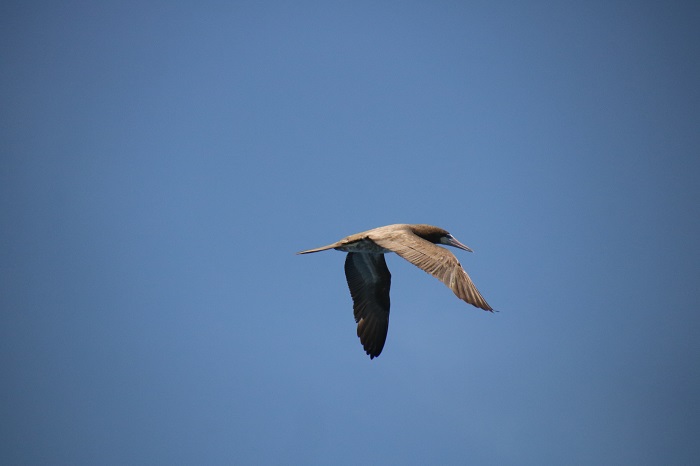
If only Bob had gotten a photo that showed how close these birds got to us. They are so agile. In this photo you can see the blurry outline of our forestay.
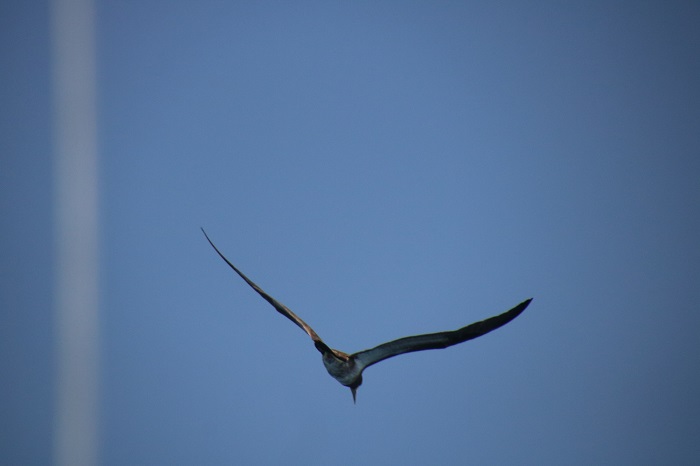
I don’t think I do anything as hard as what the boobies and flying fish were doing as I watched. All that work for a such a small meal of fish with very little meat and so many tiny bones. And all that work for such tiny fish to fight for life–avoiding the giant boat hull lumbering at them, escaping from the depths to be attacked from above. What a hard life!
This has been an exciting season for experiencing nature’s extremes. The cruisers down here have all noted how much windier it’s been this year. Almost all of us have been visited by porpoise on our voyages, and several cruisers have seen whales. Bob and I think we saw a whale breach…in the far, far distance. No photo.
Bob is currently writing about his extreme experiences racing in the Classic Yacht Regatta aboard Columbia. That was extreme sailing! Everyday a few of the crew were swept down the deck by the force of the waves crashing over the bulwarks. The experienced crew were well versed in grabbing people as they slid by. Bob got tossed down the deck on the first day of sailing and was caught by a crewman who apologized for getting so ‘personal.’ Bob was thankful to be grabbed. A friend of ours got swept away on the 2nd day — not overboard, but he did have his pants ripped off entirely, and he got a nasty rope burn down his chest (and etc.) from the line he was desperately clinging to as he made that voyage down the deck.
One of the professional photographers sent these two images to Bob. No one is in charge at all, except the force of nature!
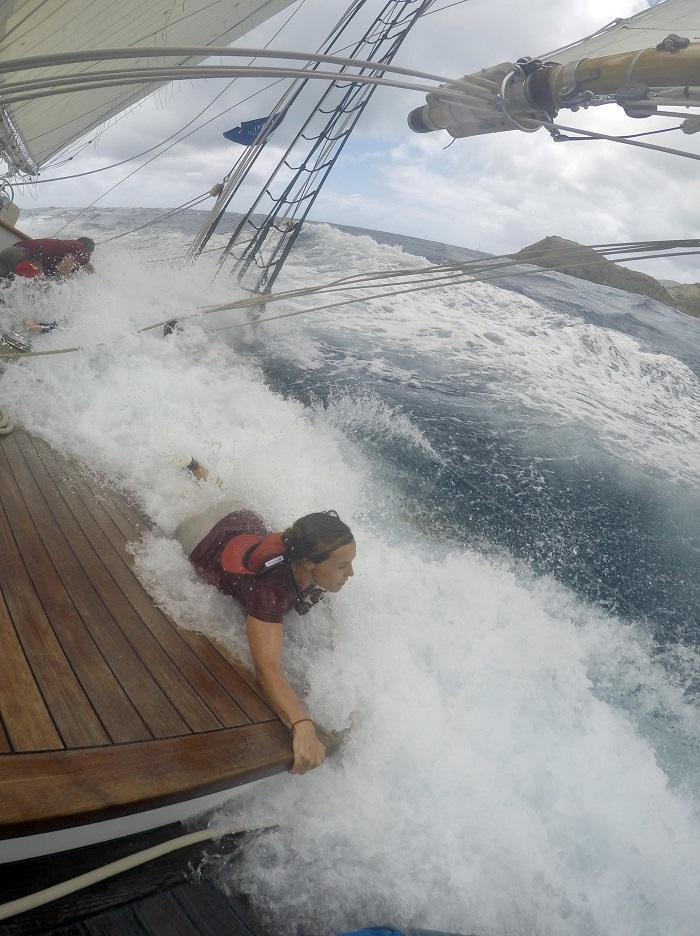
I can’t even tell where the bulwark is in this photo!
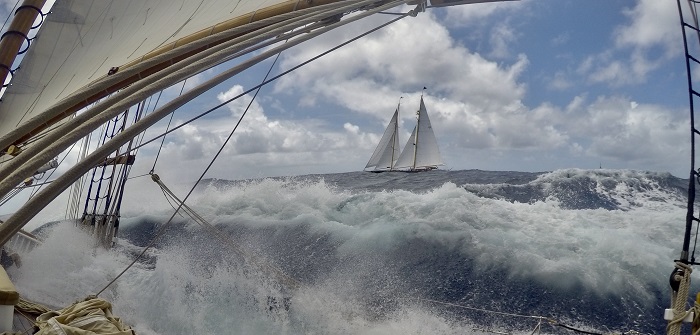
The islands of the West Indies are extreme in the best and worst that nature offers, although nature doesn’t make judgments like that. Nature just is. There are volcanic mountains and remains of pitons, rainforests, incredibly blue waters, skies and rainbows, and hurricanes. And when things go down it’s on a different scale entirely than when I decide to head home in my car, park in the garage, and get inside my house for comfort. Safety isn’t even on my radar. I just want to be warm and dry!
And thinking of home, we head home in three days. On Sunday night I’ll sleep in my cloud bed, and when the sun rises on Monday, I’ll be outside checking my gardens. With a little luck my flower boxes might hold miniature daffodils and grape hyacinths. The daffs at the top of our hill might be starting to bloom. I have to start preparing for Easter the things I want to share with our NYC kids and our grandchildren in Maryland. We have a short tour of the Eastern seaboard to take within a week of getting home. It’s all pretty exciting to this weary, and reluctant, sailor.
Earlier this week I looked at a few years’ worth of garden pictures, missing home, but also getting psyched for the return. I found this photo of a bouquet of my first rose of the season, with other spring flowers, from a few years ago–hellebore, tulips, bleeding hearts. I’m looking forward to all of these!
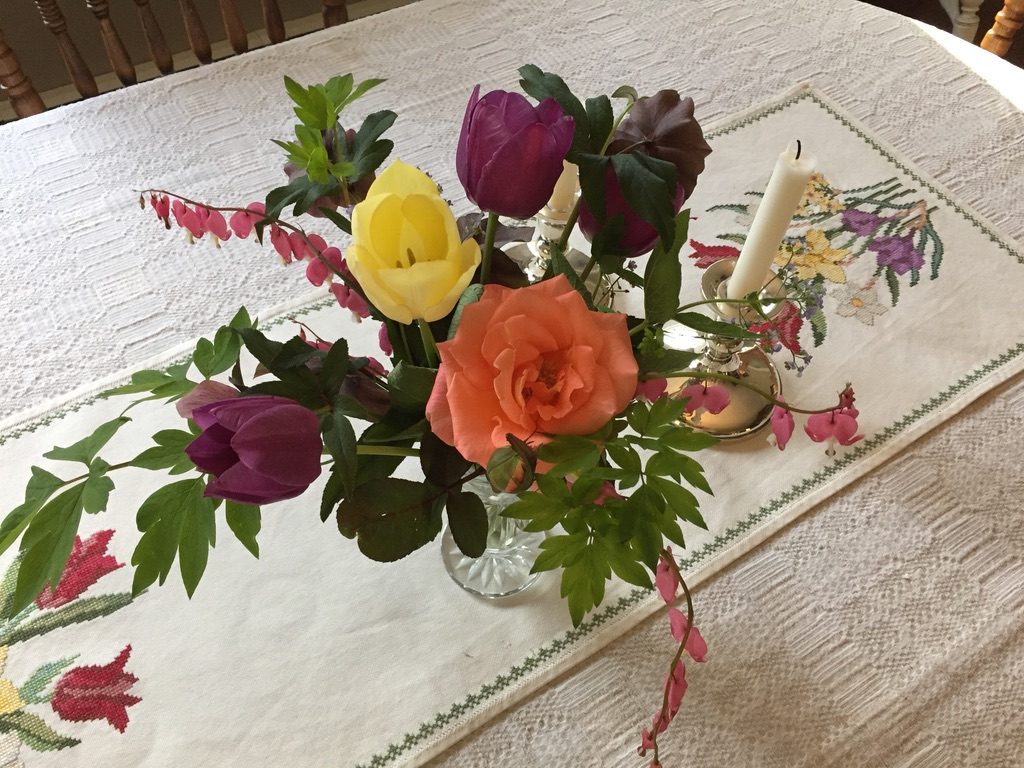
Ever the goal seeker, I have to make an accounting of the projects I have finished during the Caribbean season. I finished that blue sweater, knitted sideways, from cuff to cuff, more than a month ago. I have finished the orange vest, but cannot bring myself to put it on for a photo. For one thing, it really needs wet finishing to complete the look of the knitted lace. And I don’t have the proper clothing to set off this pretty vest! Some time ago I finished a Nanucket basket vase that needs a bit sanding and a coat of varnish at home. Not a bad showing for four months away from home.
The bigger news is that I have completed everything I can do down here on my small tapestry. I now realize that I love embellishing things! The last time I added ‘bling’ to a tapestry was in 2015, when the Wednesday Group made portraits on chop stick warps that Archie made for each of us. I did a triptych of Greek characters: Artemis, Theseus, and the Minotaur. The best part of that project was thinking up non-woven ‘accessories’ to add to the weaving. Now, I am having the same fun embellishing my current small tapestry. I’ve added needle weaving and knitting so far. At home I will make a length of kumihimo in a pattern I know that uses three colors and looks a bit like snake skin. There are slits in this tapestry, and I plan to thread the braids through various slits.
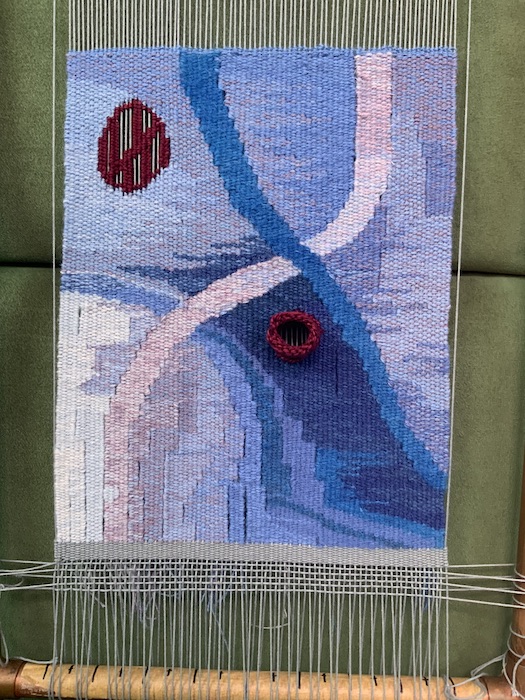
And one final thought on nature. My friend Stephanie on Hero took a photo of this sign we both saw during our time together in St. Lucia. So true.
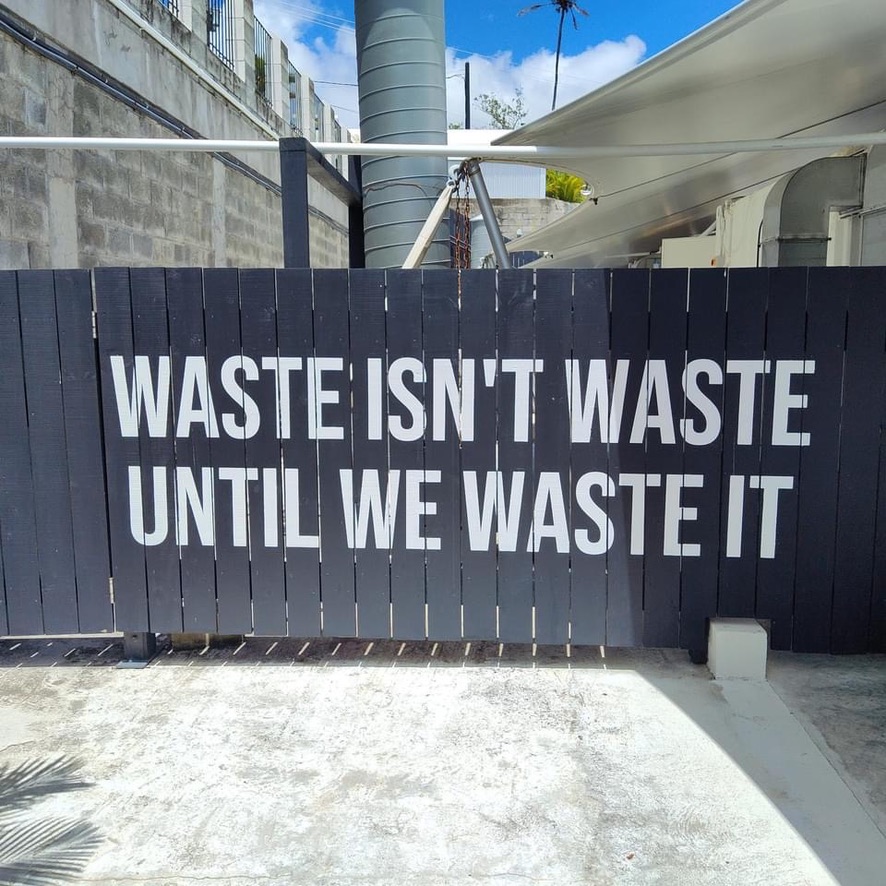
Homeward bound, back to modern life.

